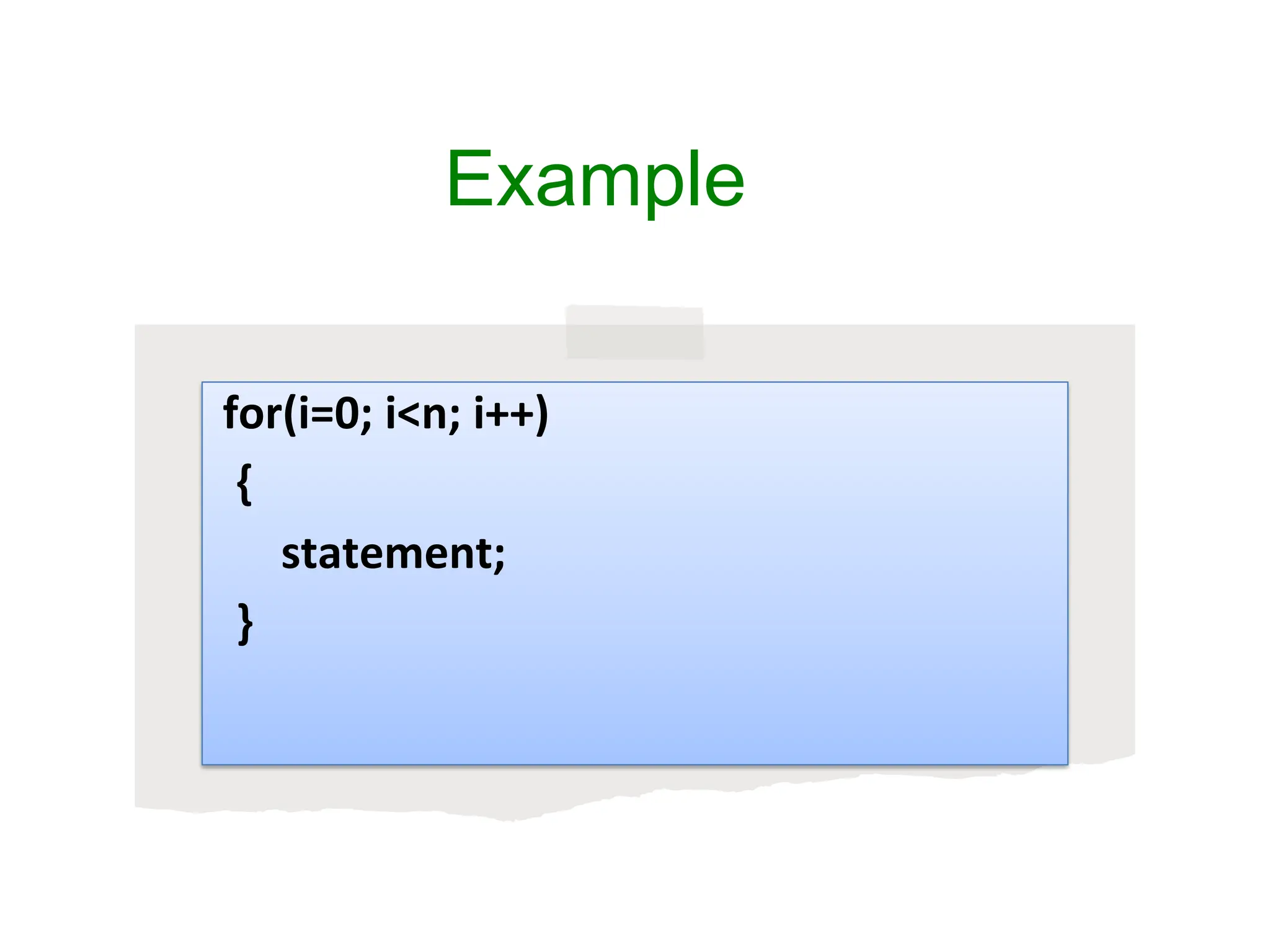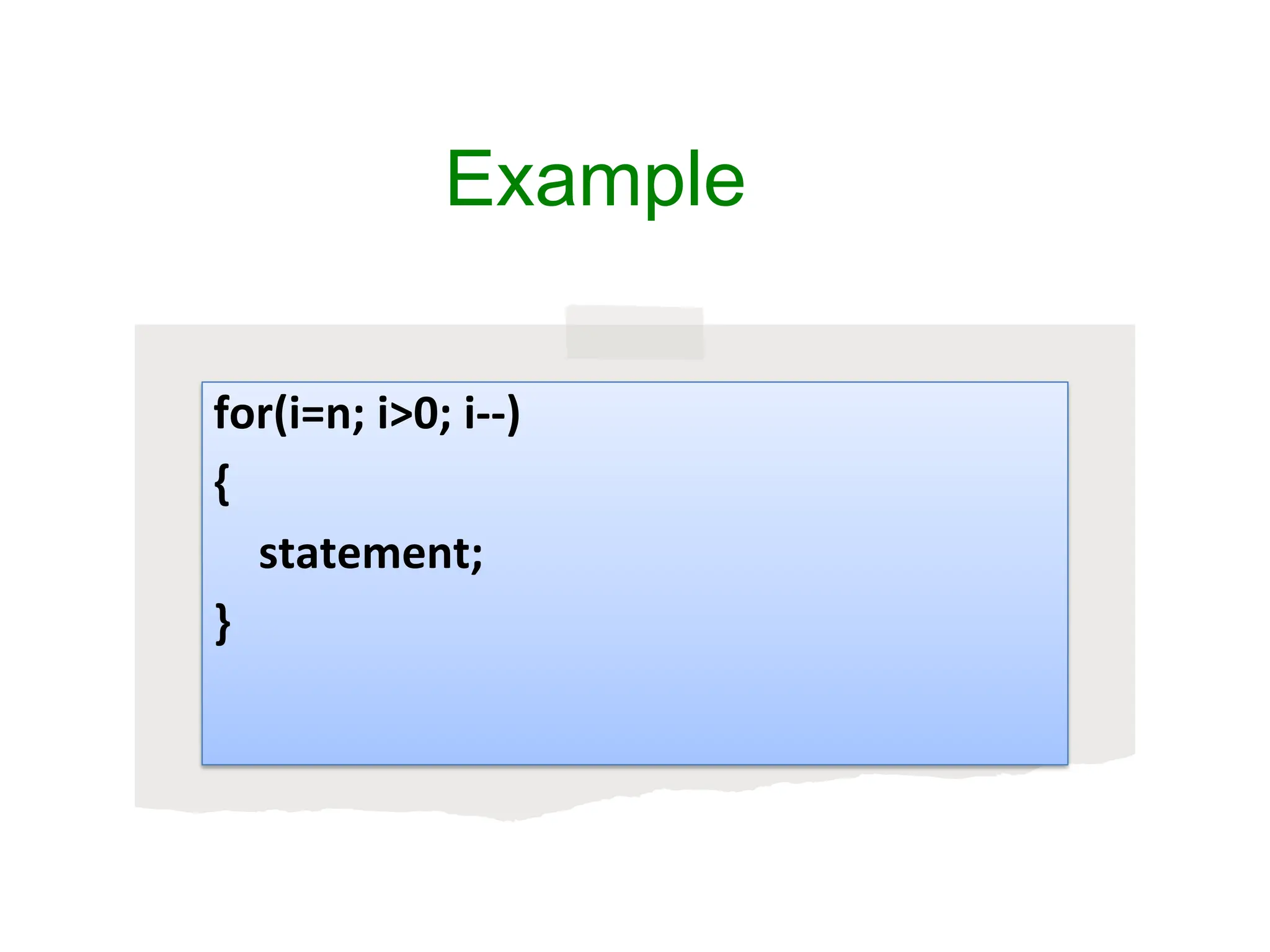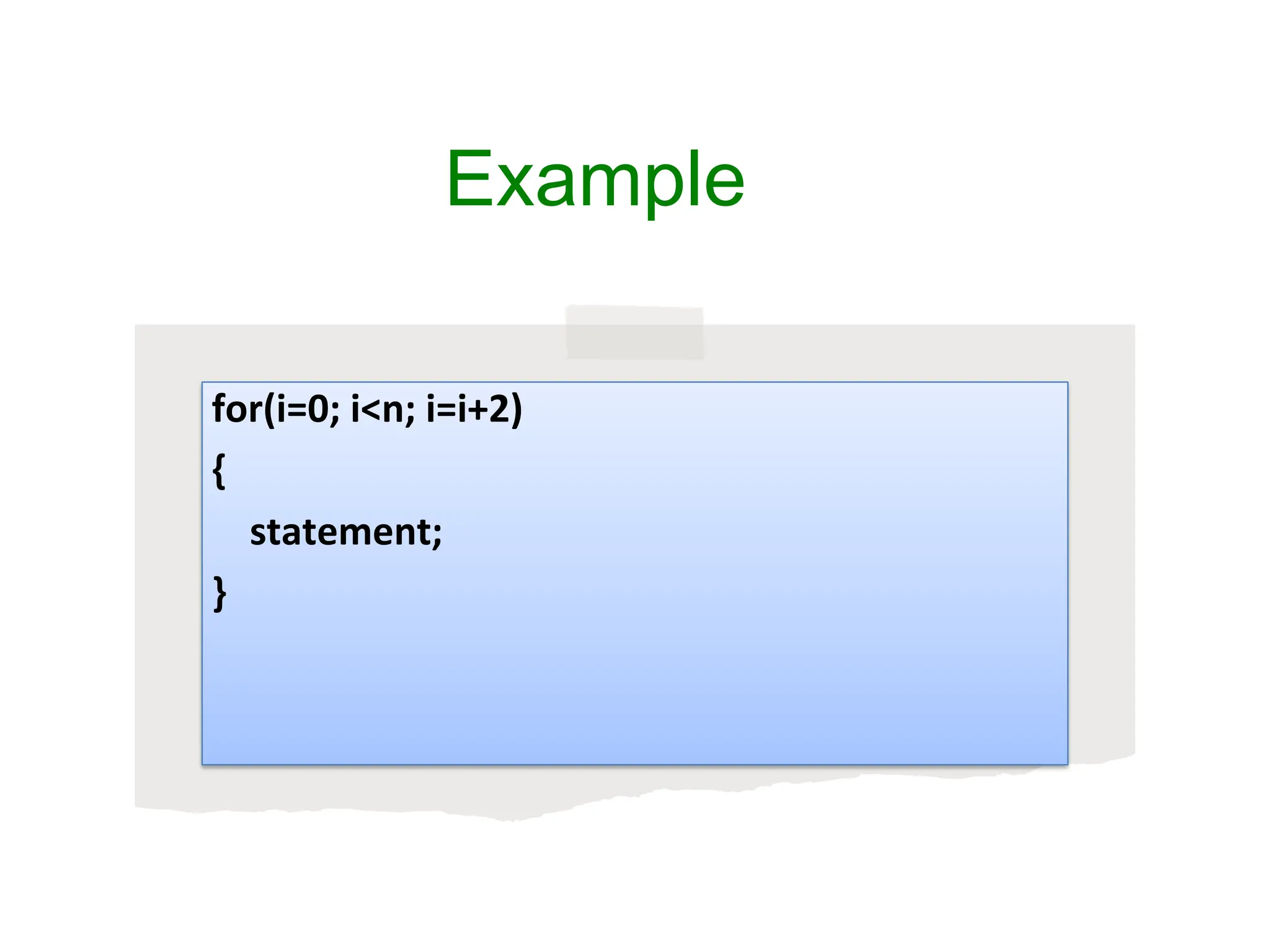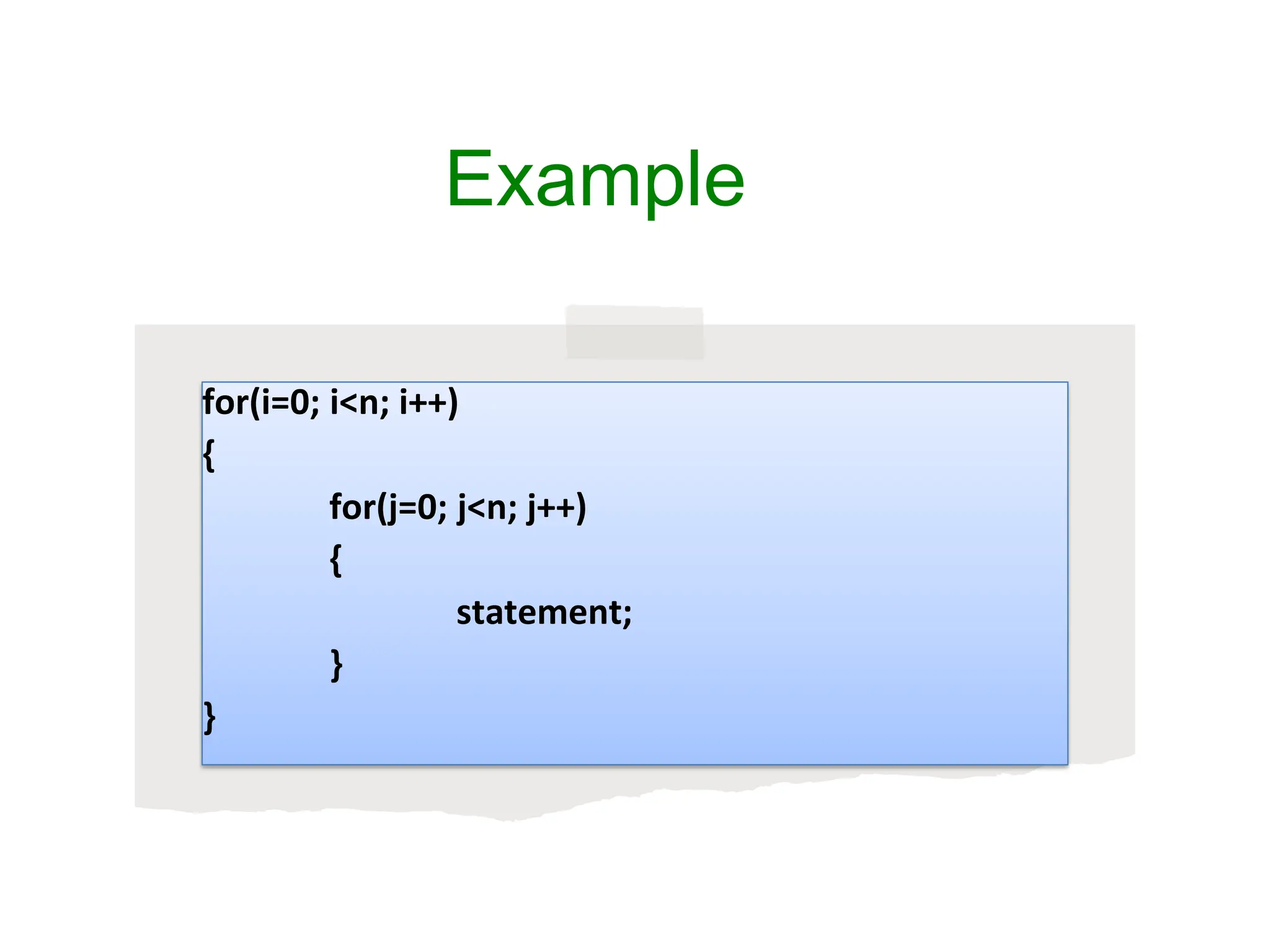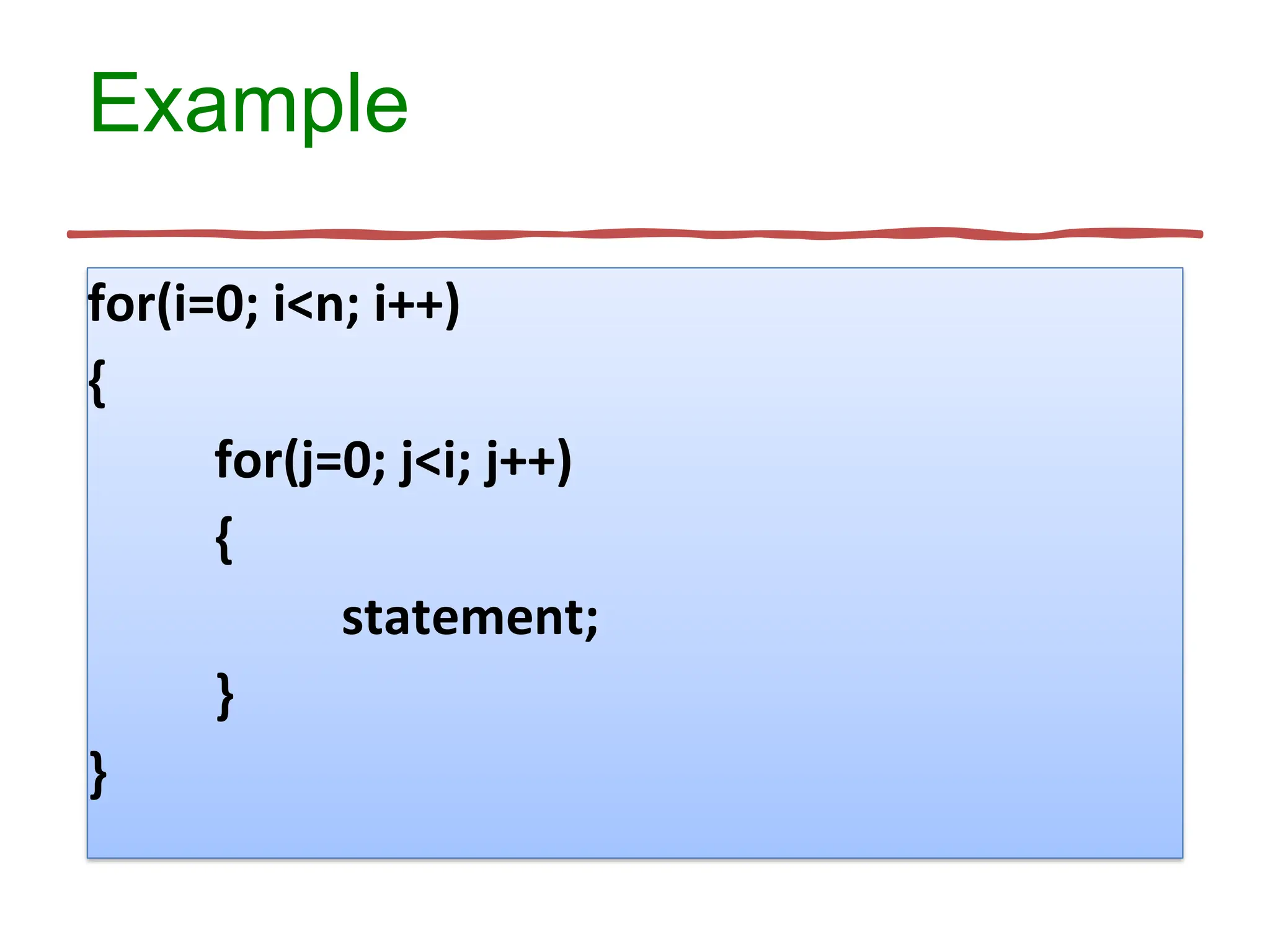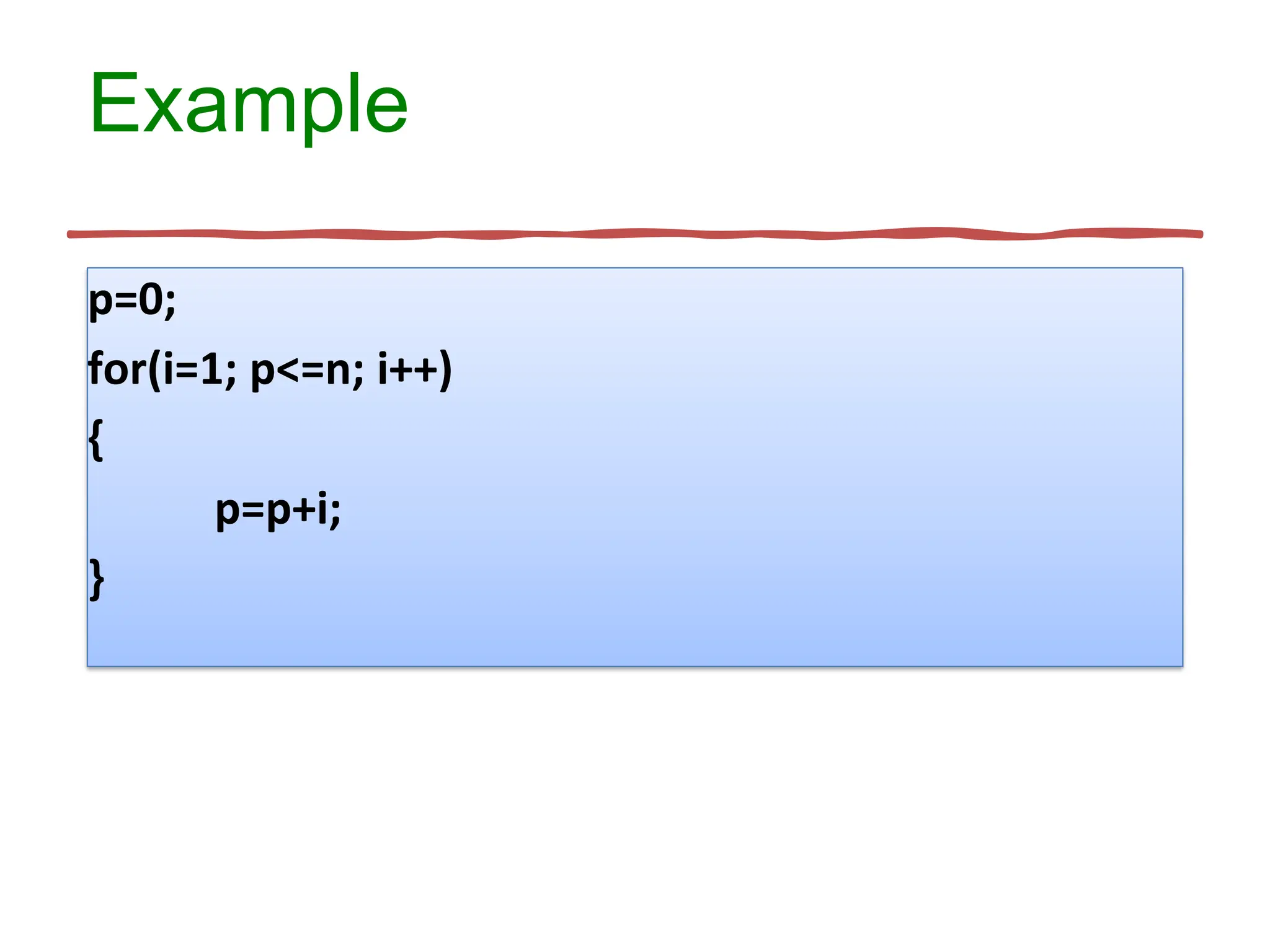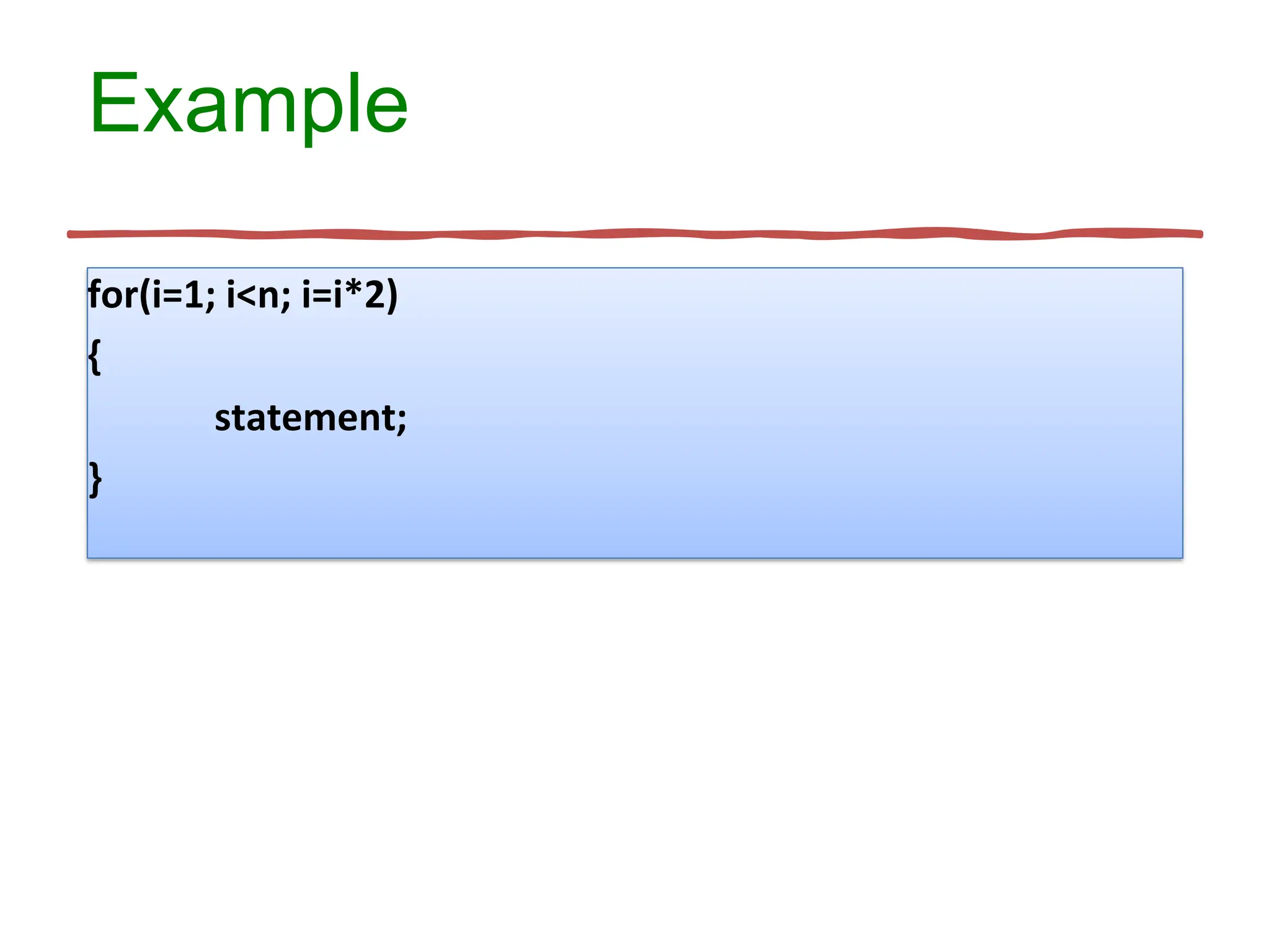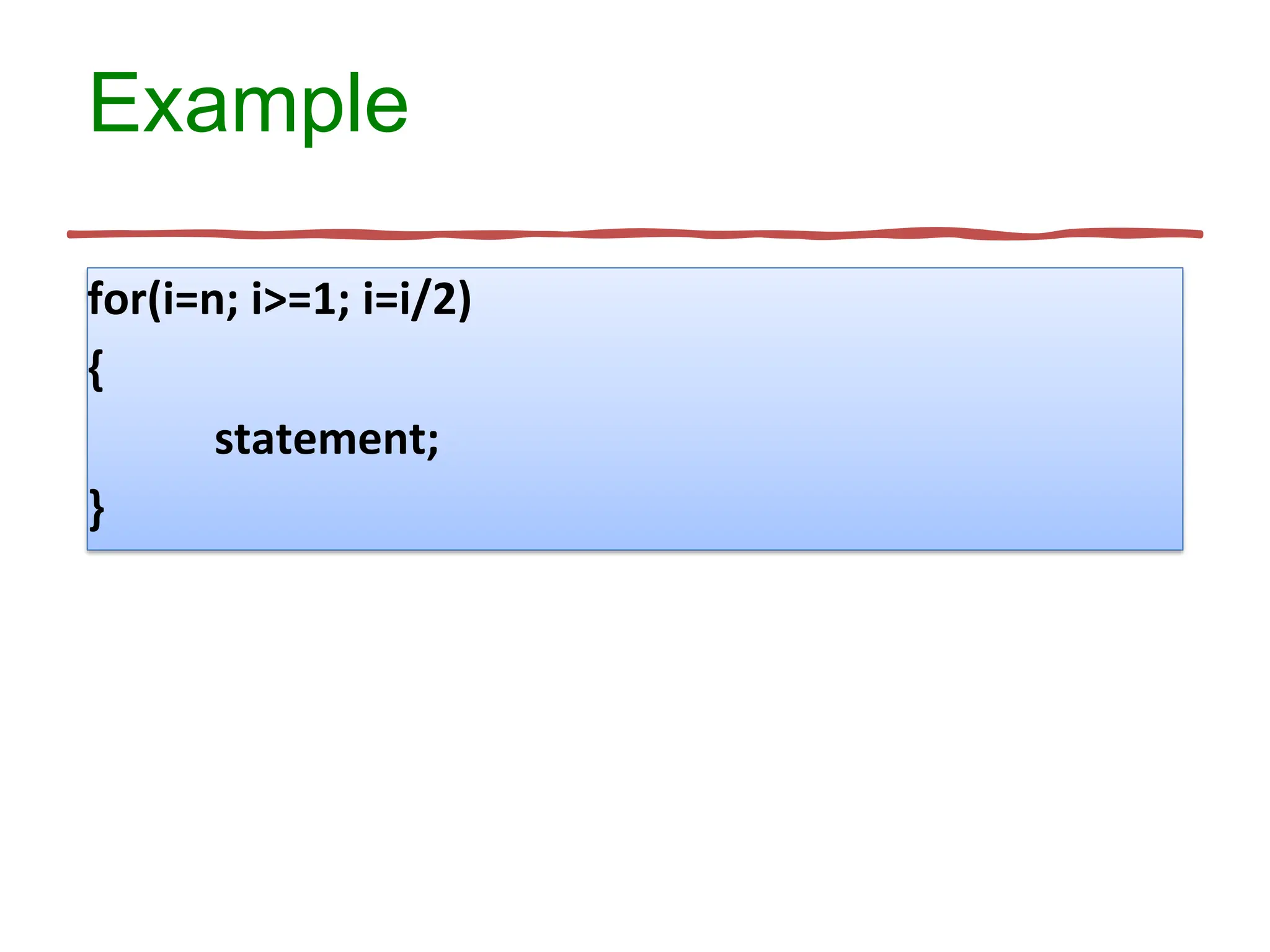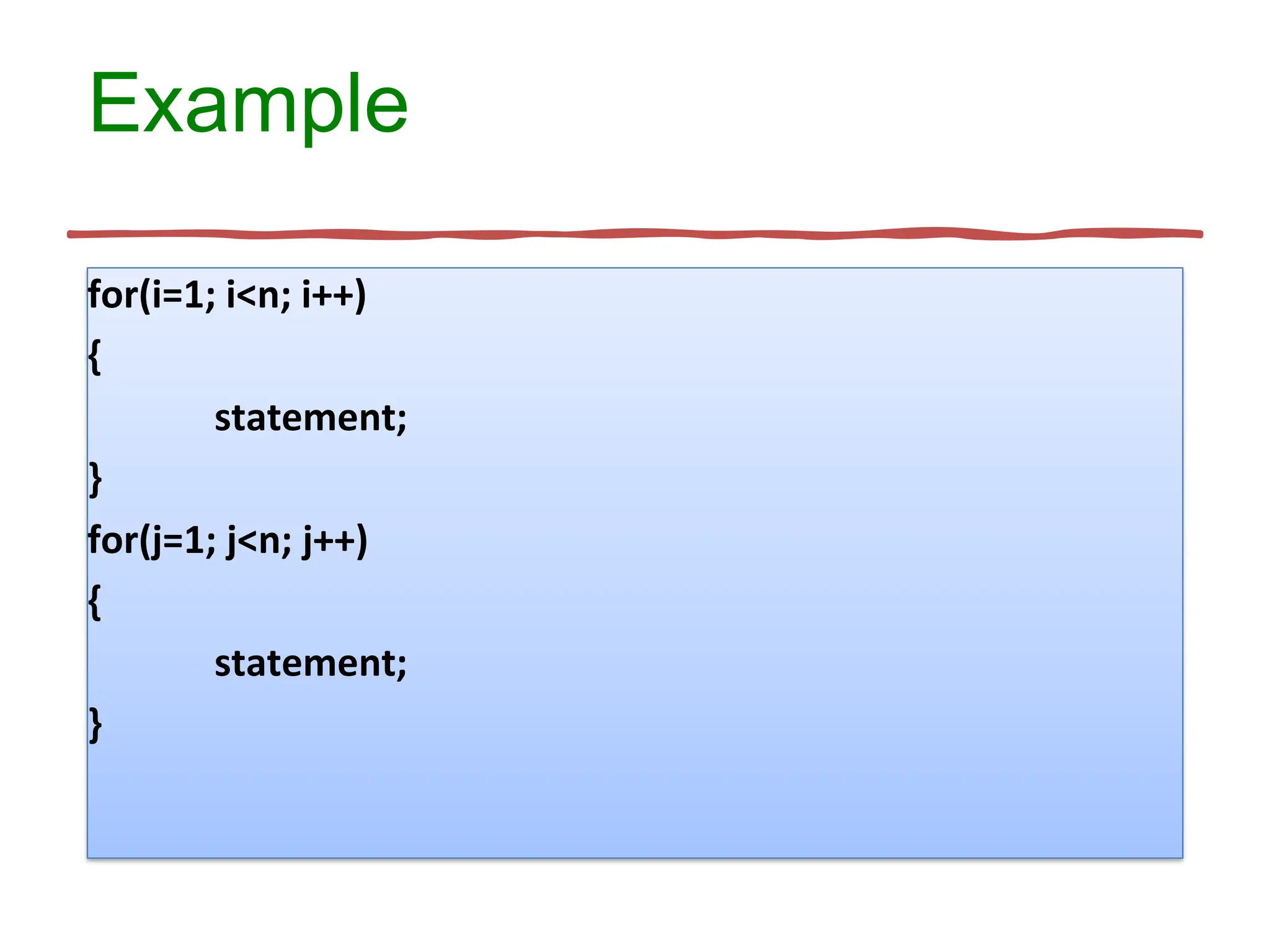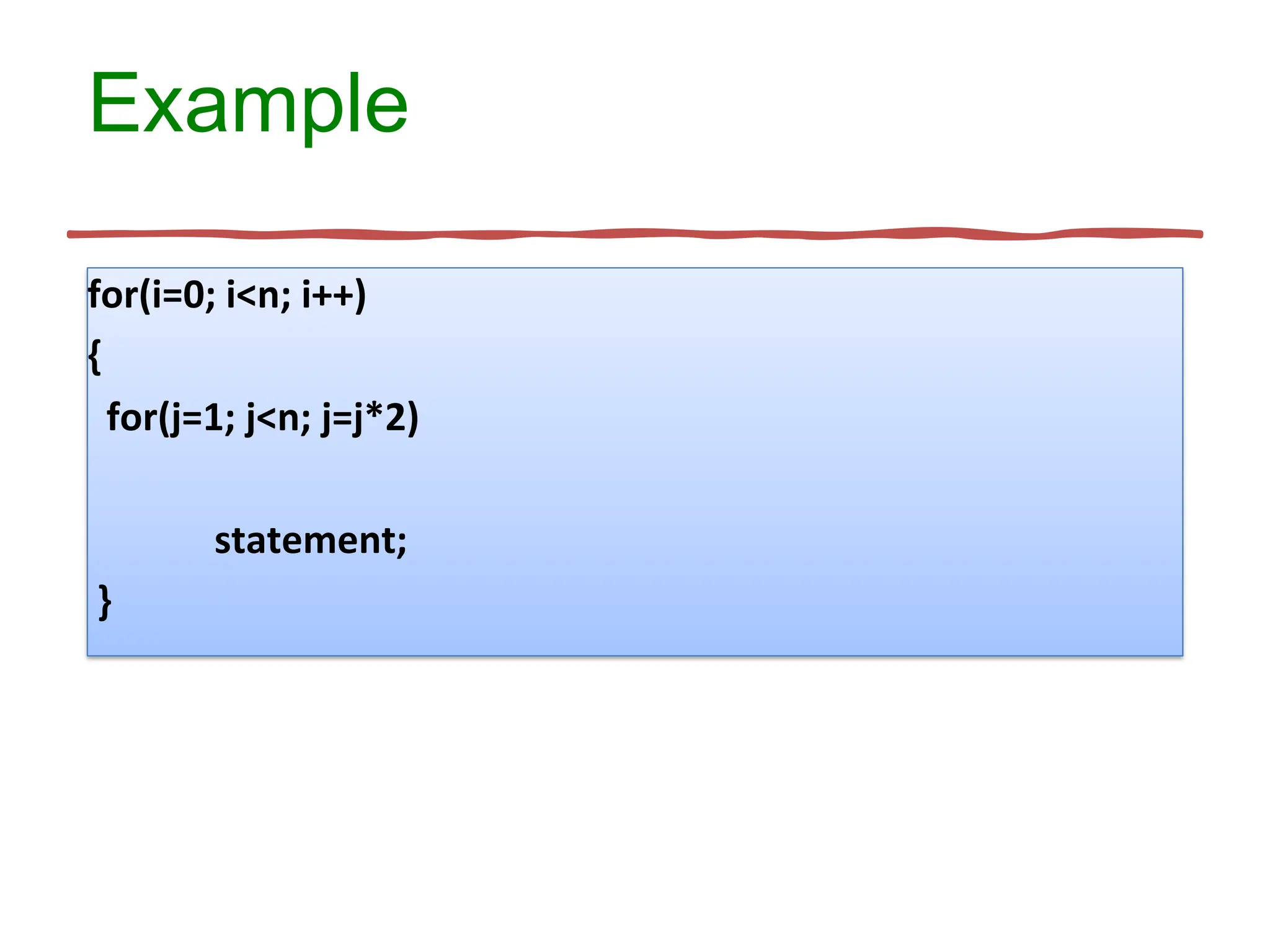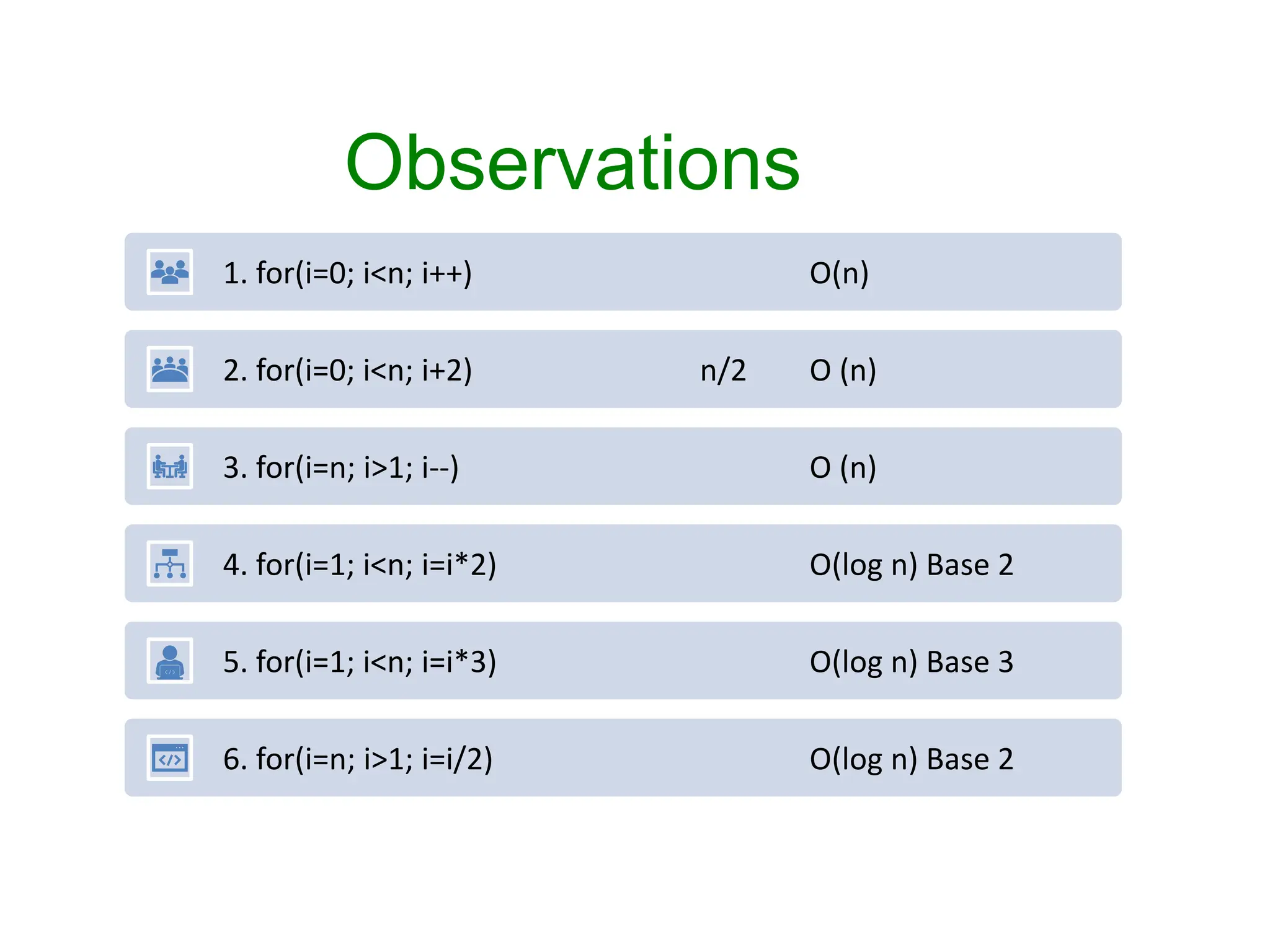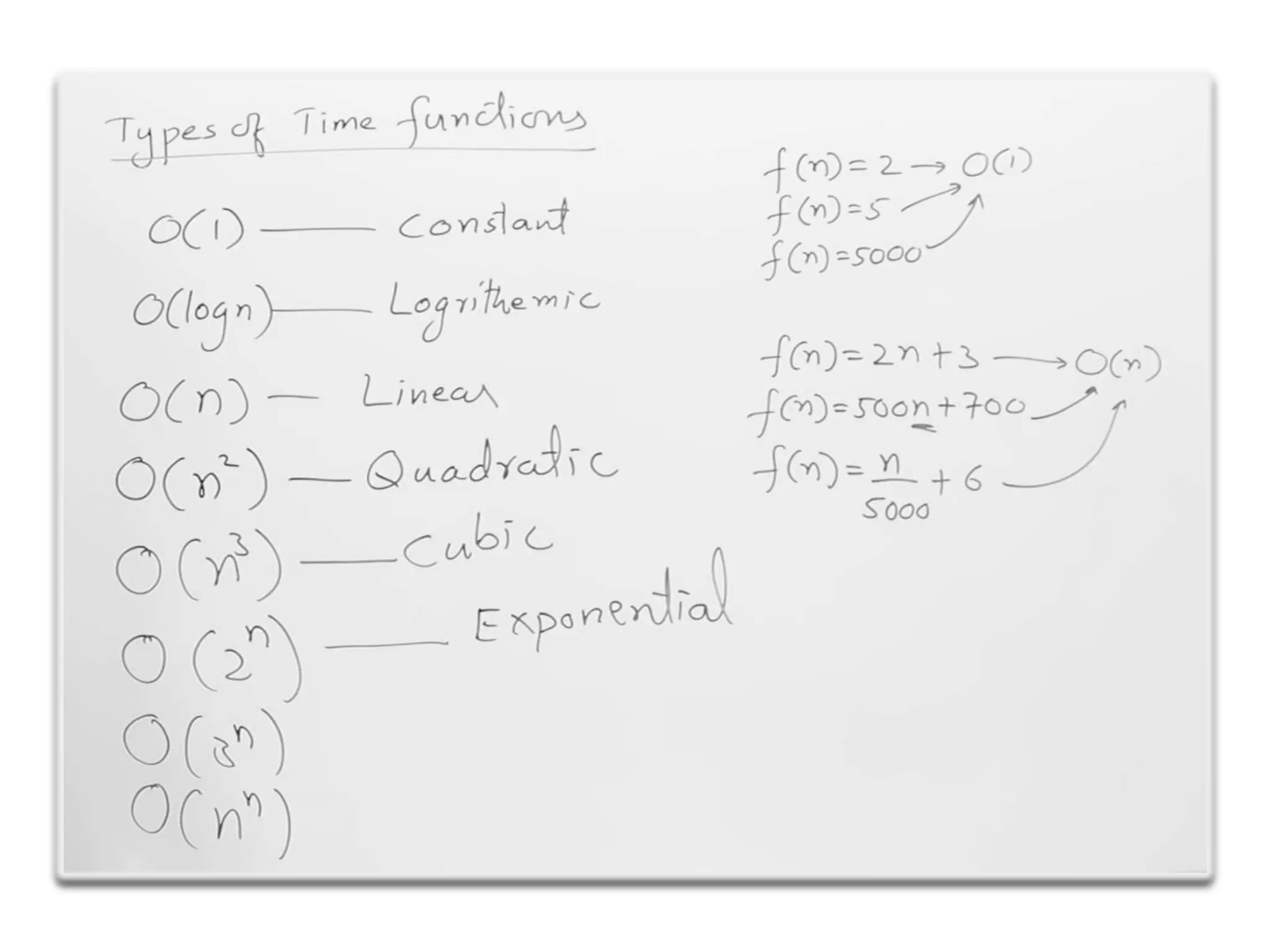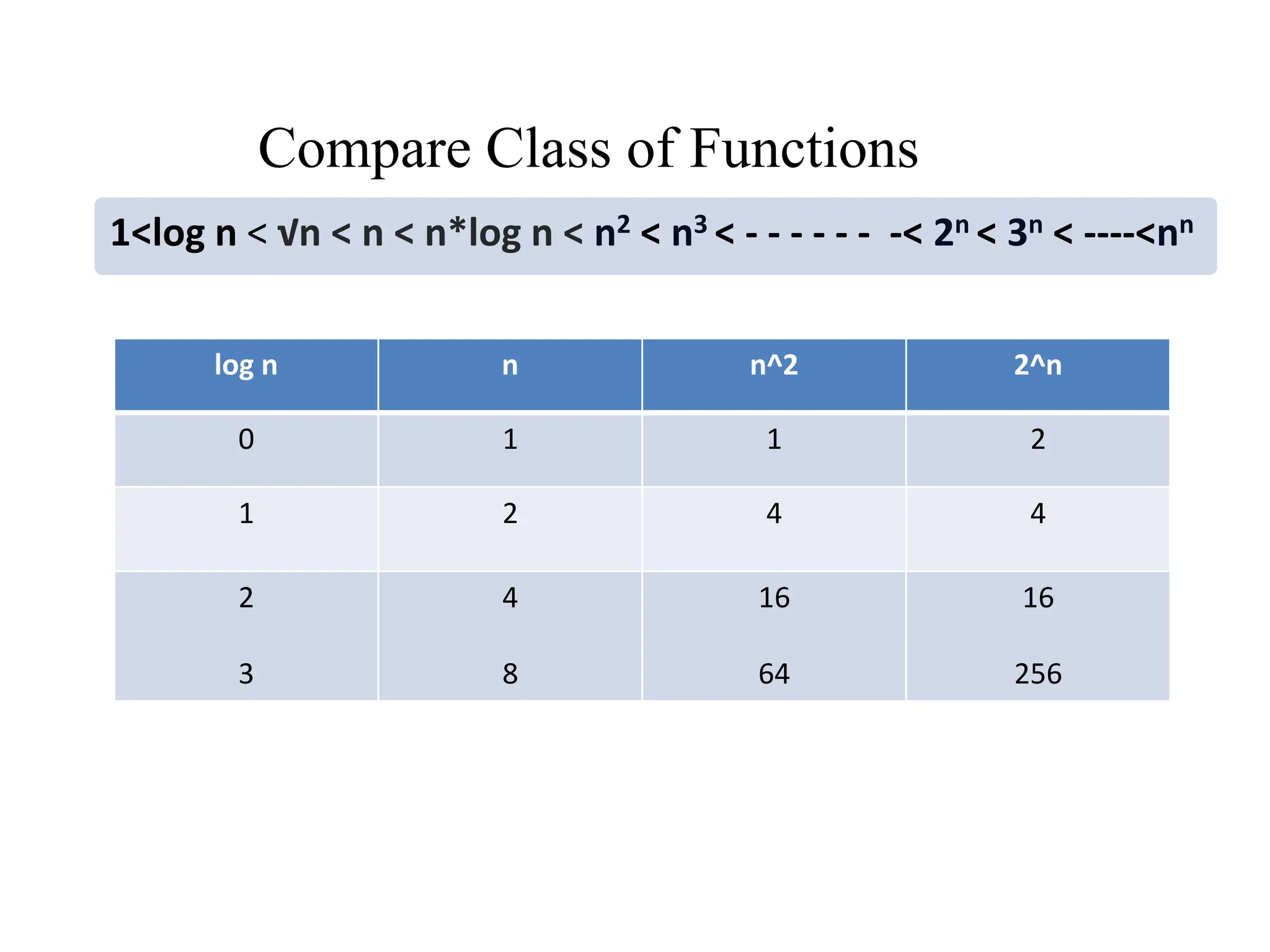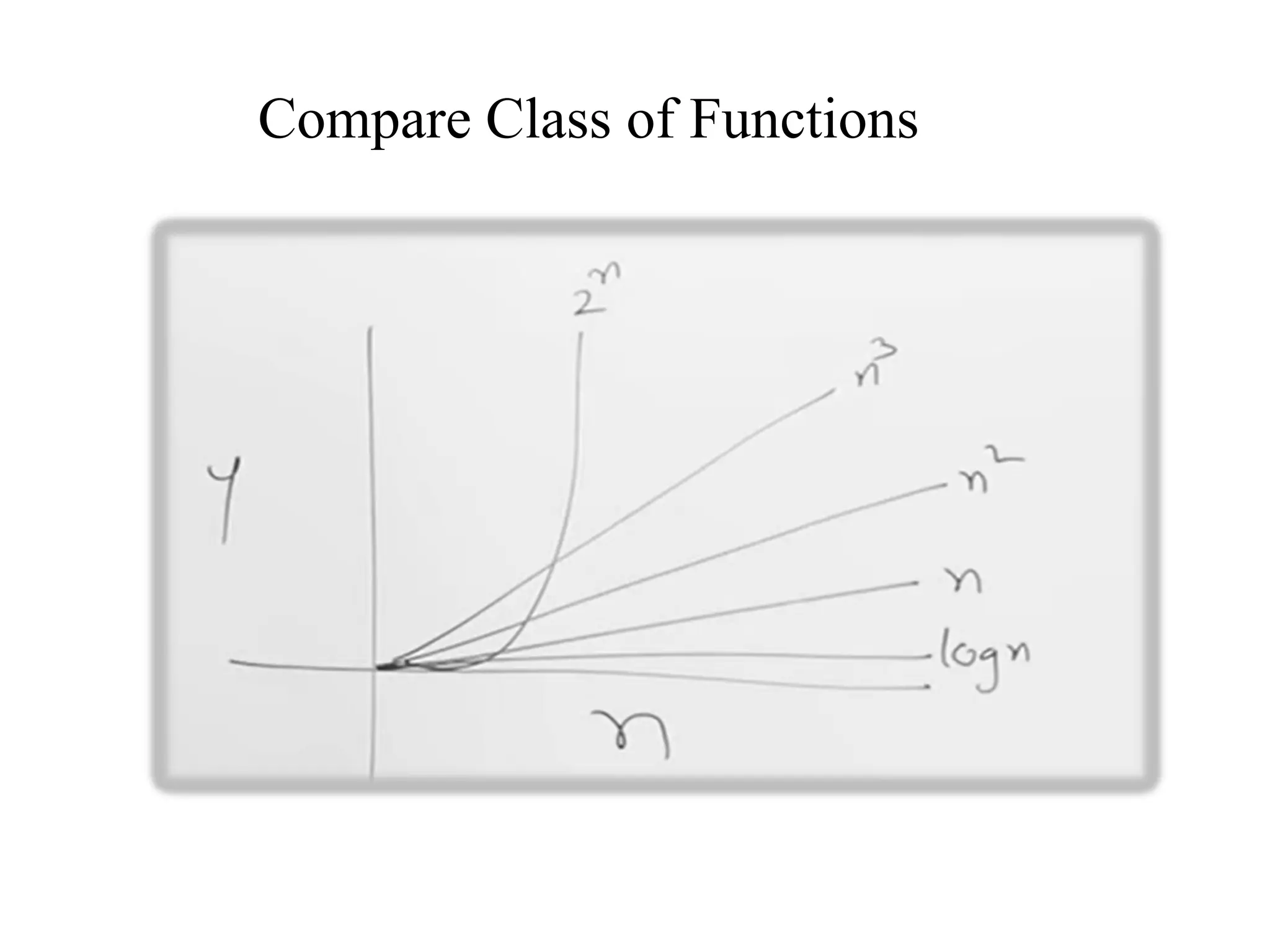The document outlines the course structure for CS3102: Design and Analysis of Algorithms, including course information, assessment criteria, and a detailed syllabus covering algorithm definitions, performance analysis, solving recurrence relations, and various algorithm techniques such as divide and conquer, dynamic programming, and graph algorithms. It also provides recommended textbooks and specific course outcomes aimed at enhancing students' analytical and problem-solving skills in algorithm design. The course emphasizes understanding complexities and the applicability of different algorithms to real-world problems.
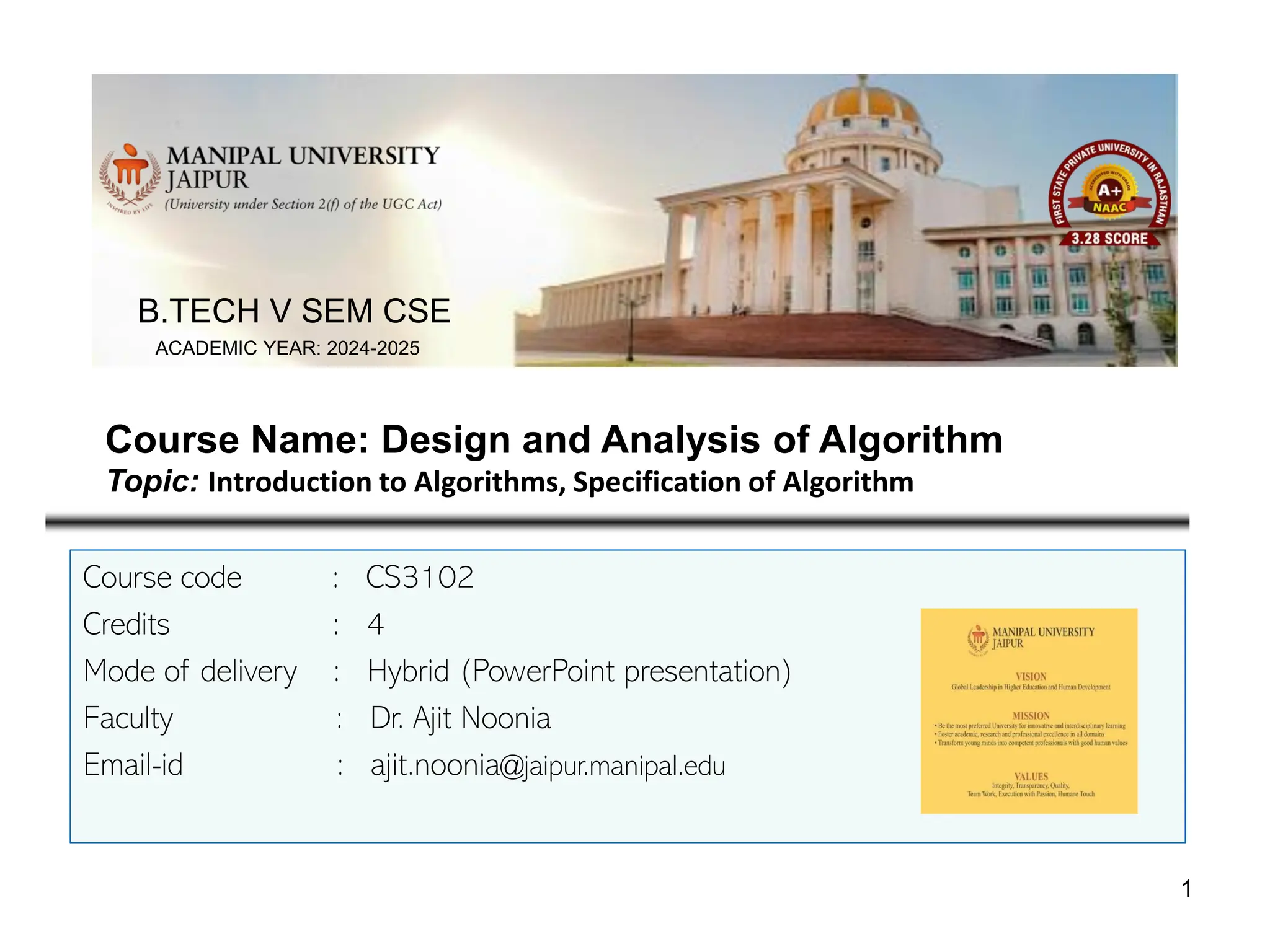
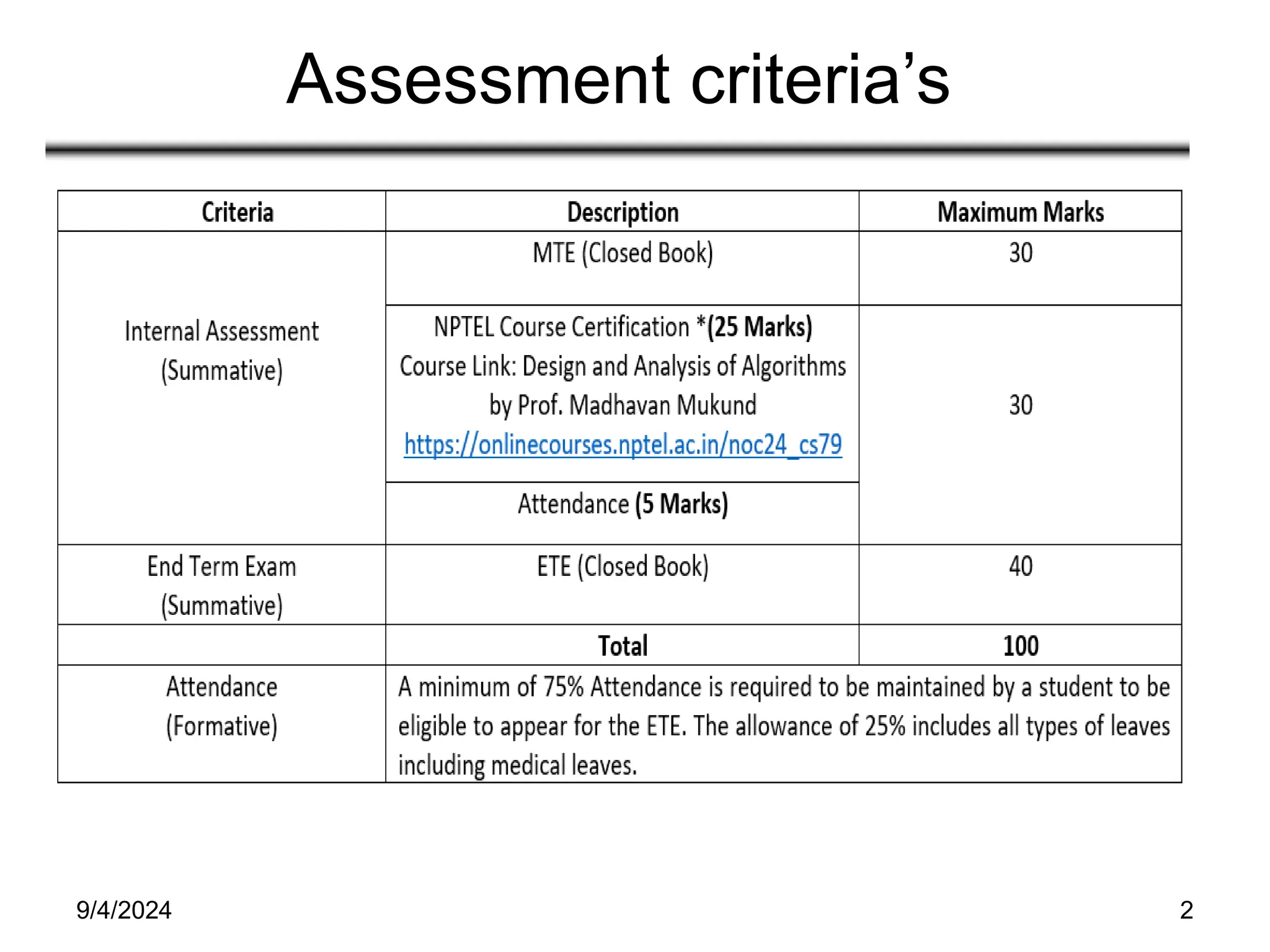
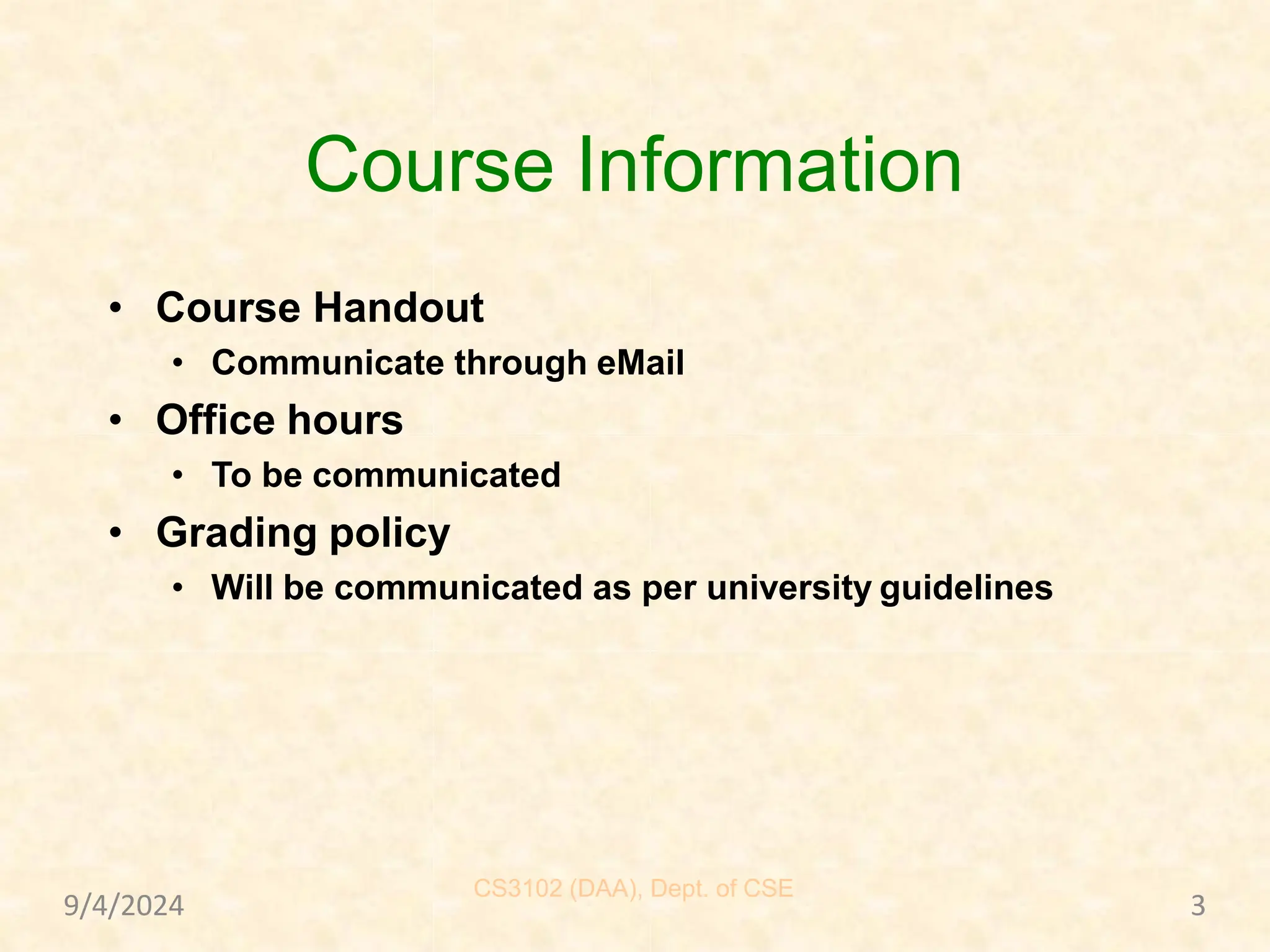
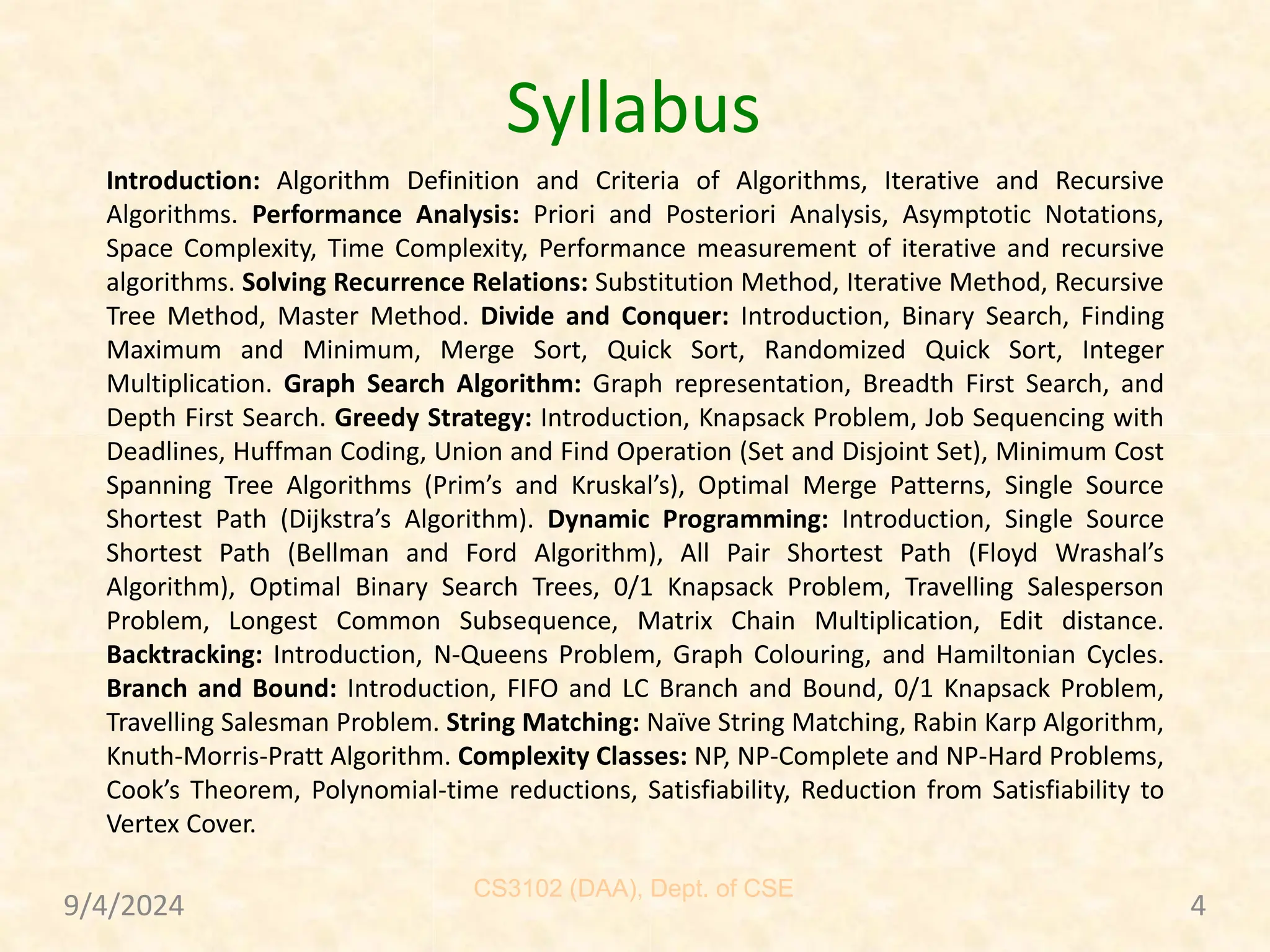
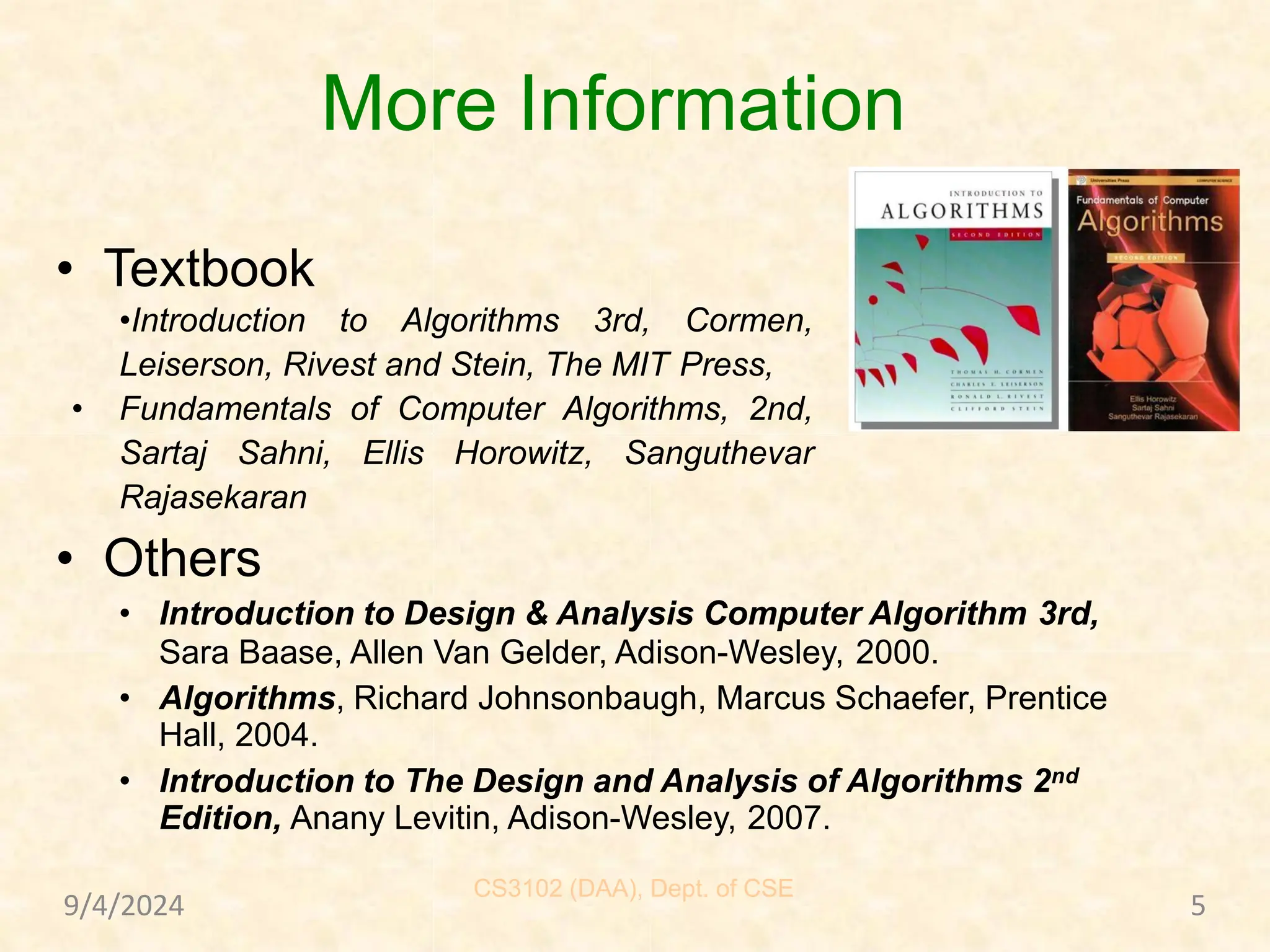
![Course Outcomes: 9/4/2024 CS3102 (DAA), Dept. of CSE 6 [CS3102.1] Analyze the running times of algorithms using asymptotic analysis. (Bloom’s Level: 4 Analyze). [CS3102.2] Contrast and design algorithms using the divide-and-conquer and graph-searching algorithms to solve business problems, hence enhancing analytical skills. (Bloom’s Level: 4 Analyze) [CS3102.3] Apply the concept of greedy and dynamic programming approaches to solving real-life problems to enhance entrepreneurship capabilities. (Bloom’s Level: 3 Apply) [CS3102.4] Utilize the principles of backtracking and branch and bound algorithms to showcase their functioning and problem-solving capabilities. (Bloom’s Level: 3 Apply) [CS3102.5] Evaluate various advanced algorithm concepts such as string matching, approximation algorithms, and complexity classes to enhance employability. (Bloom’s Level: 5 Evaluate)](https://image.slidesharecdn.com/1-241204161721-c318da80/75/1-Introduction-to-Algorithms-Specification-of-Algorithm-Complexity-pdf-6-2048.jpg)
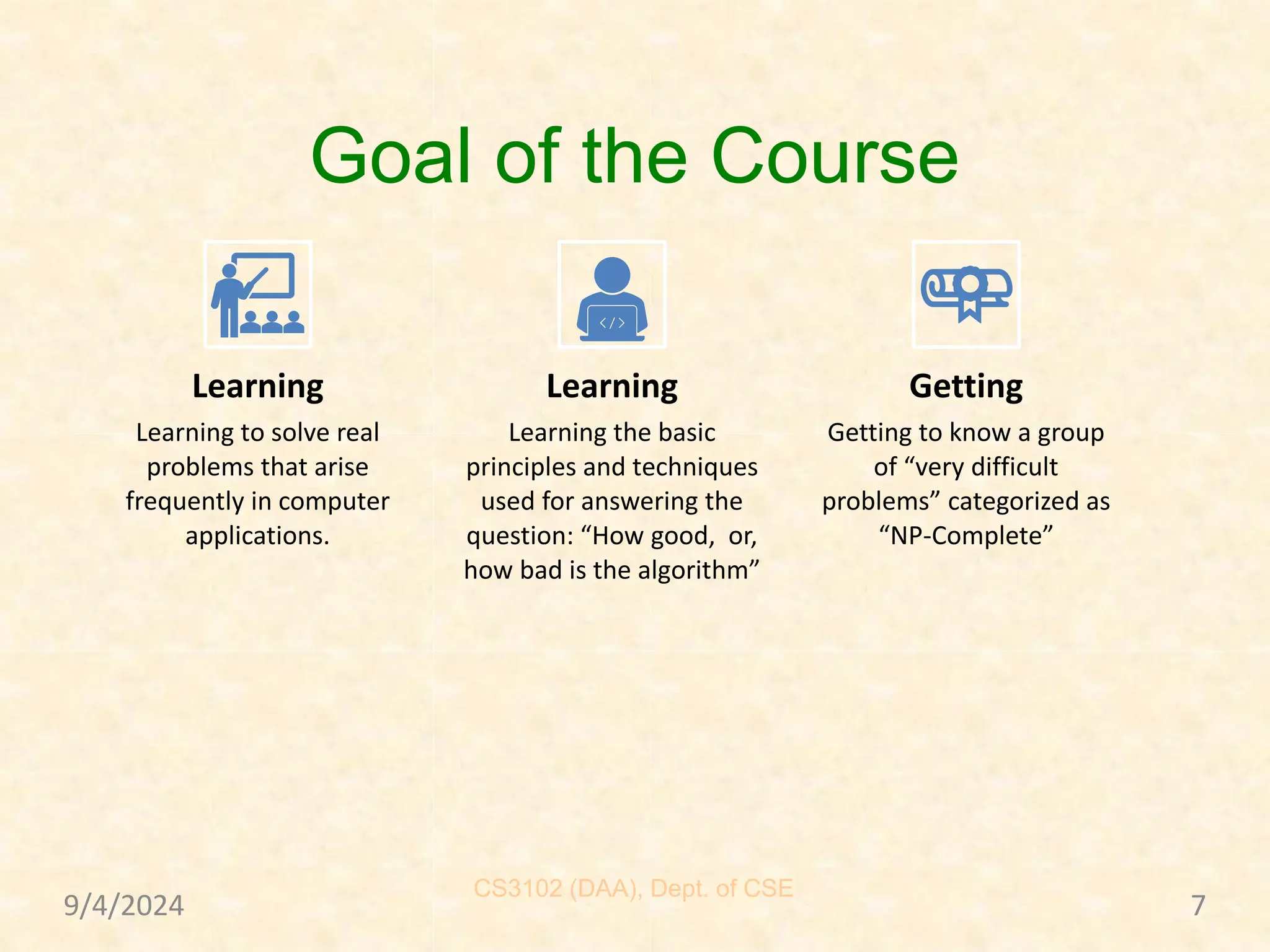
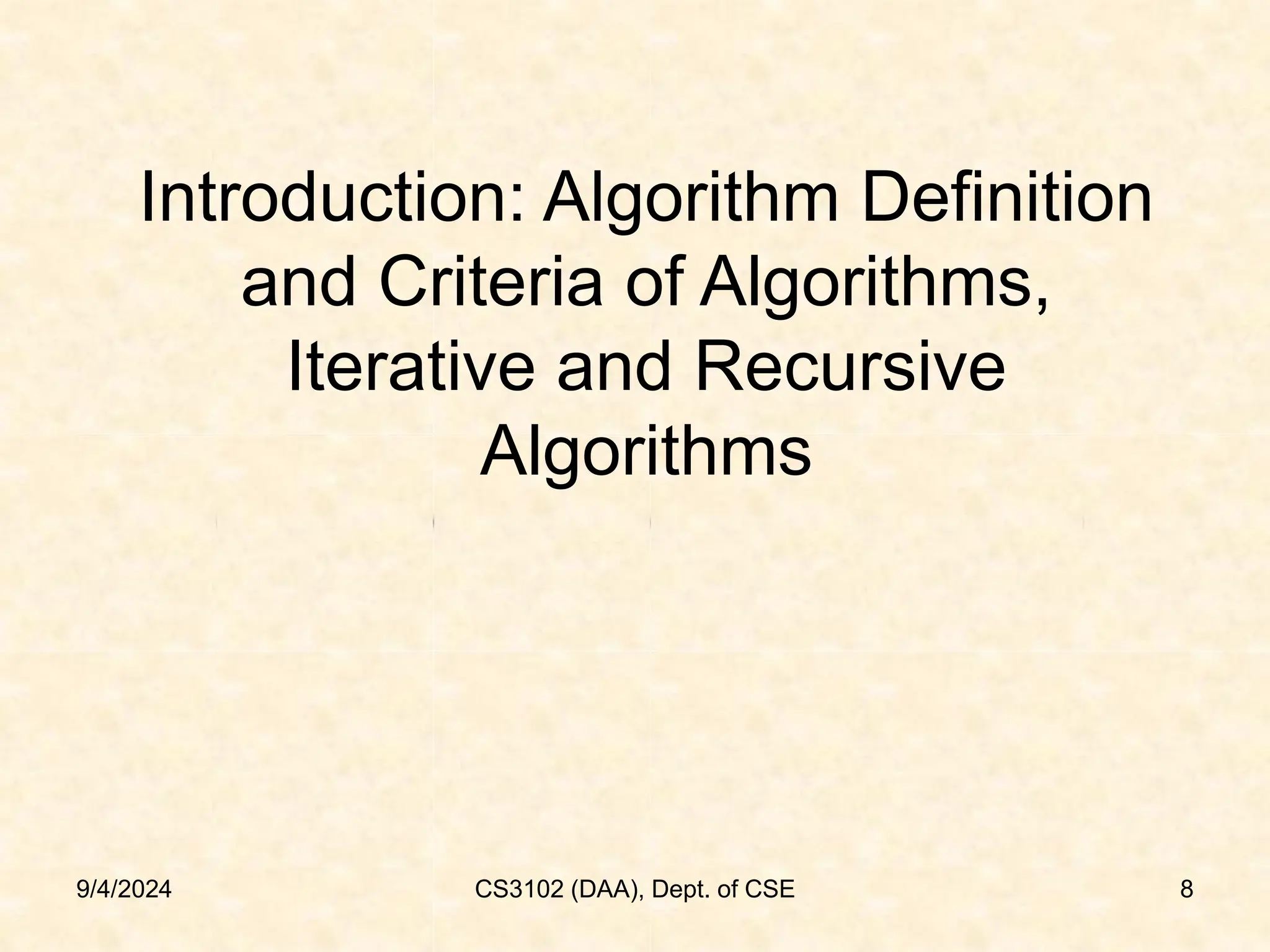
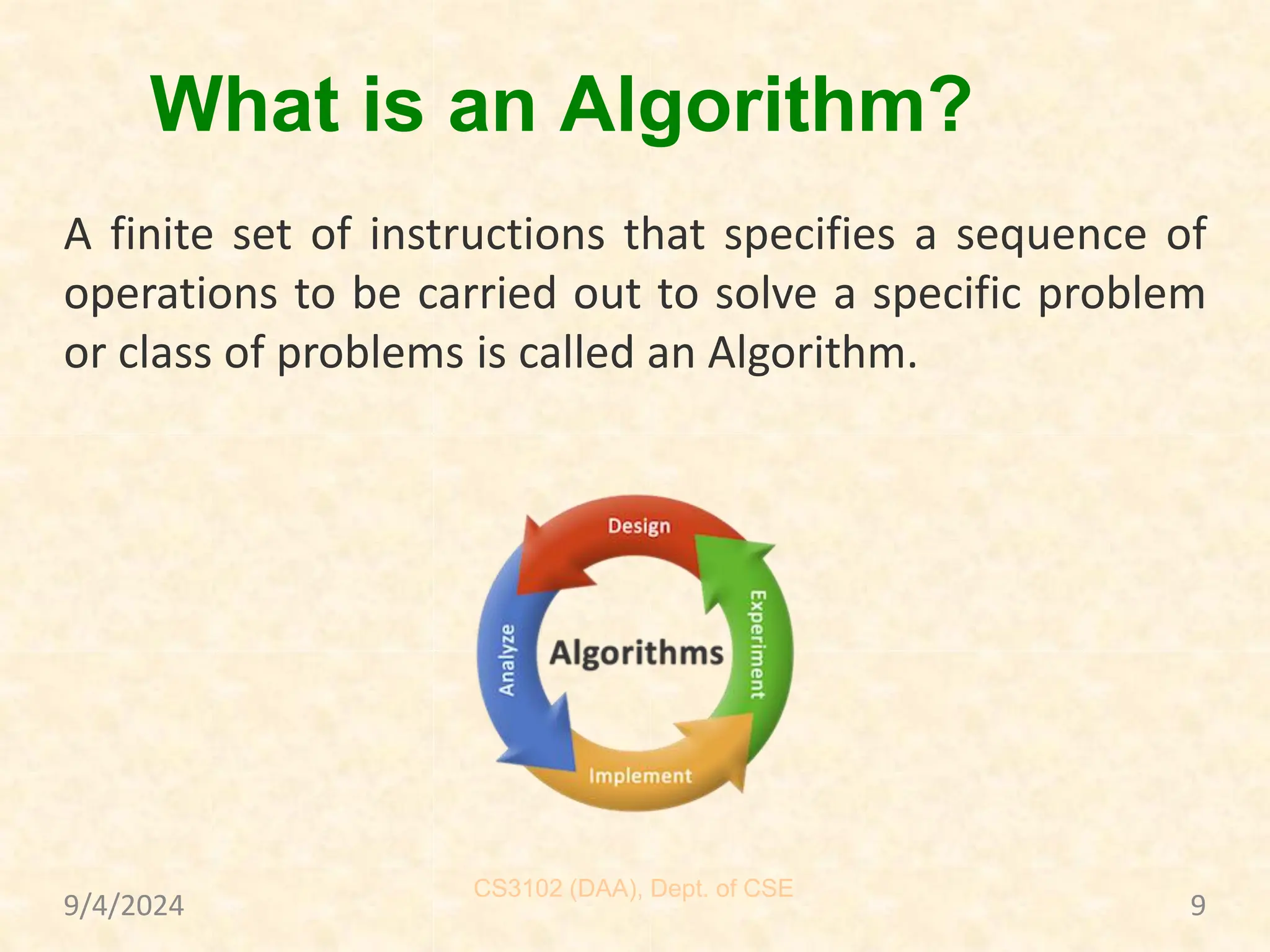
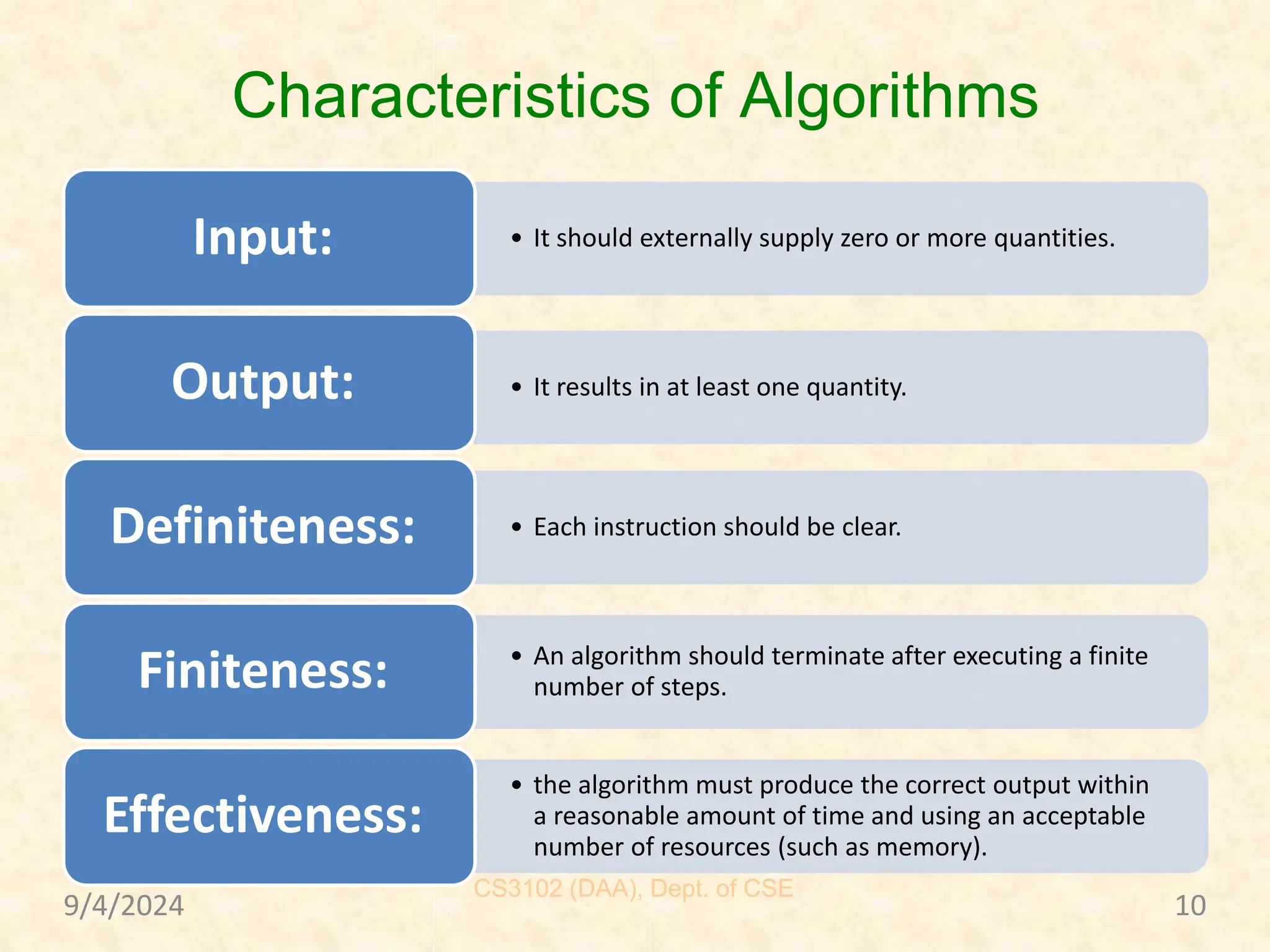
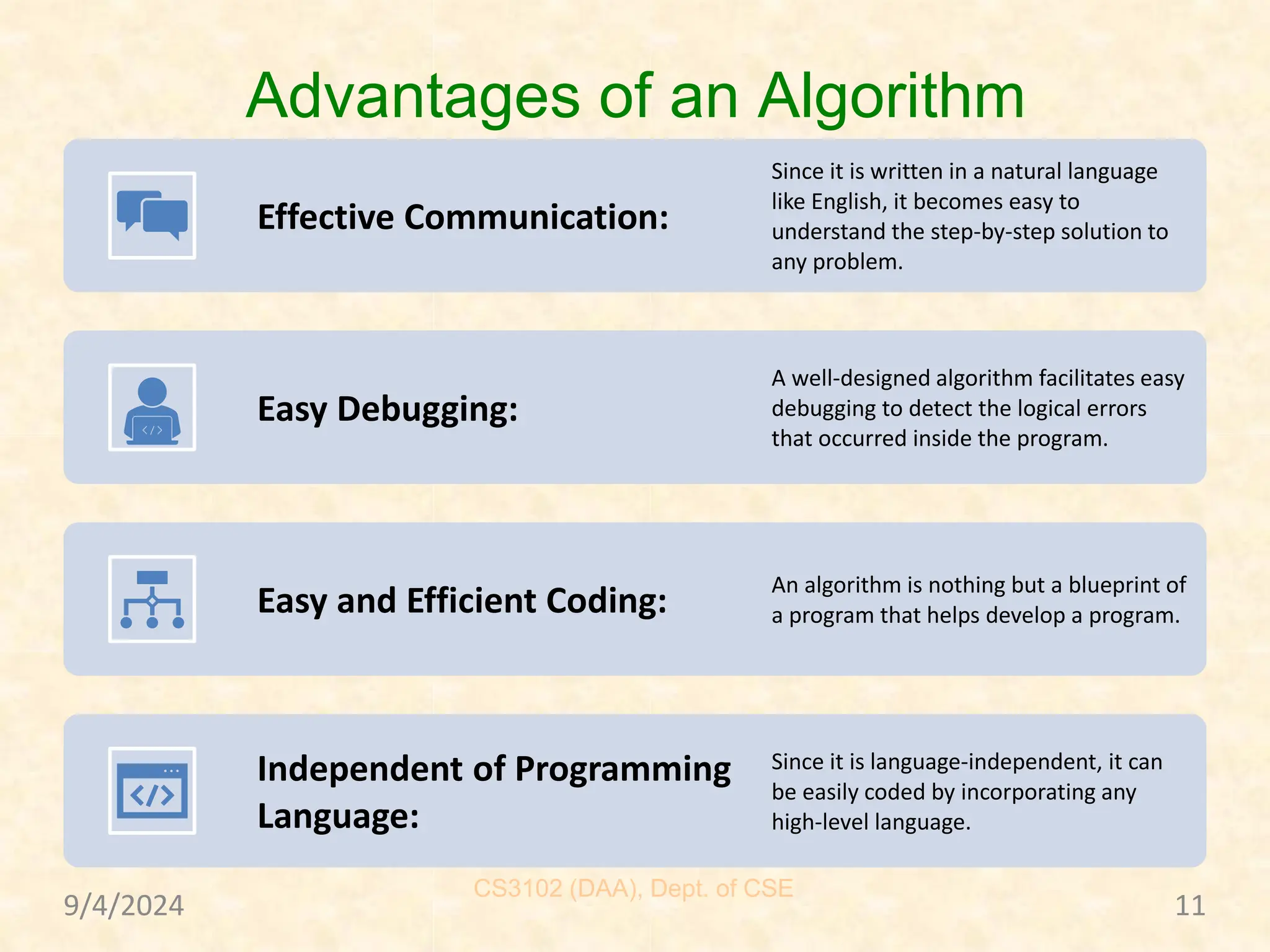
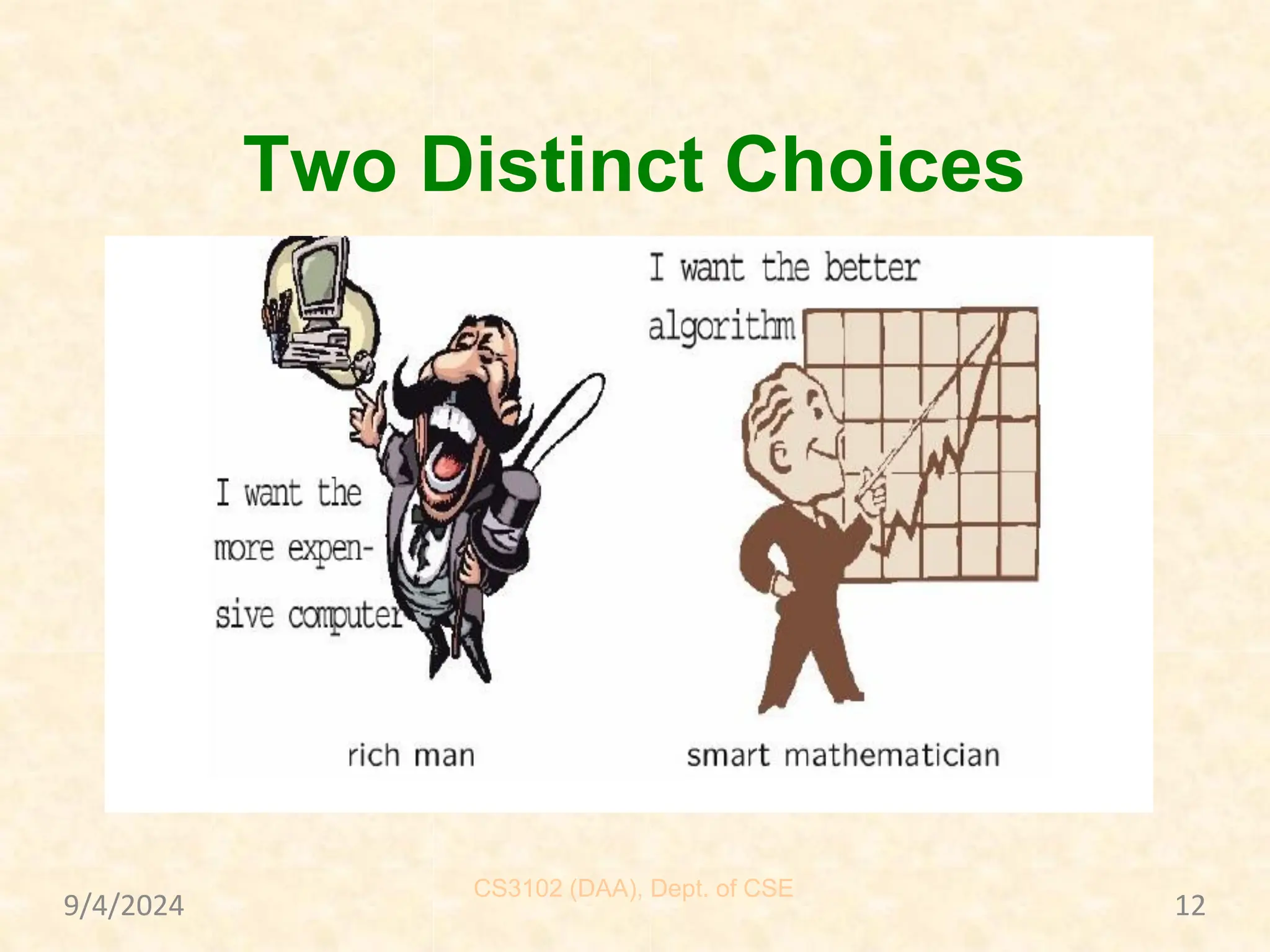
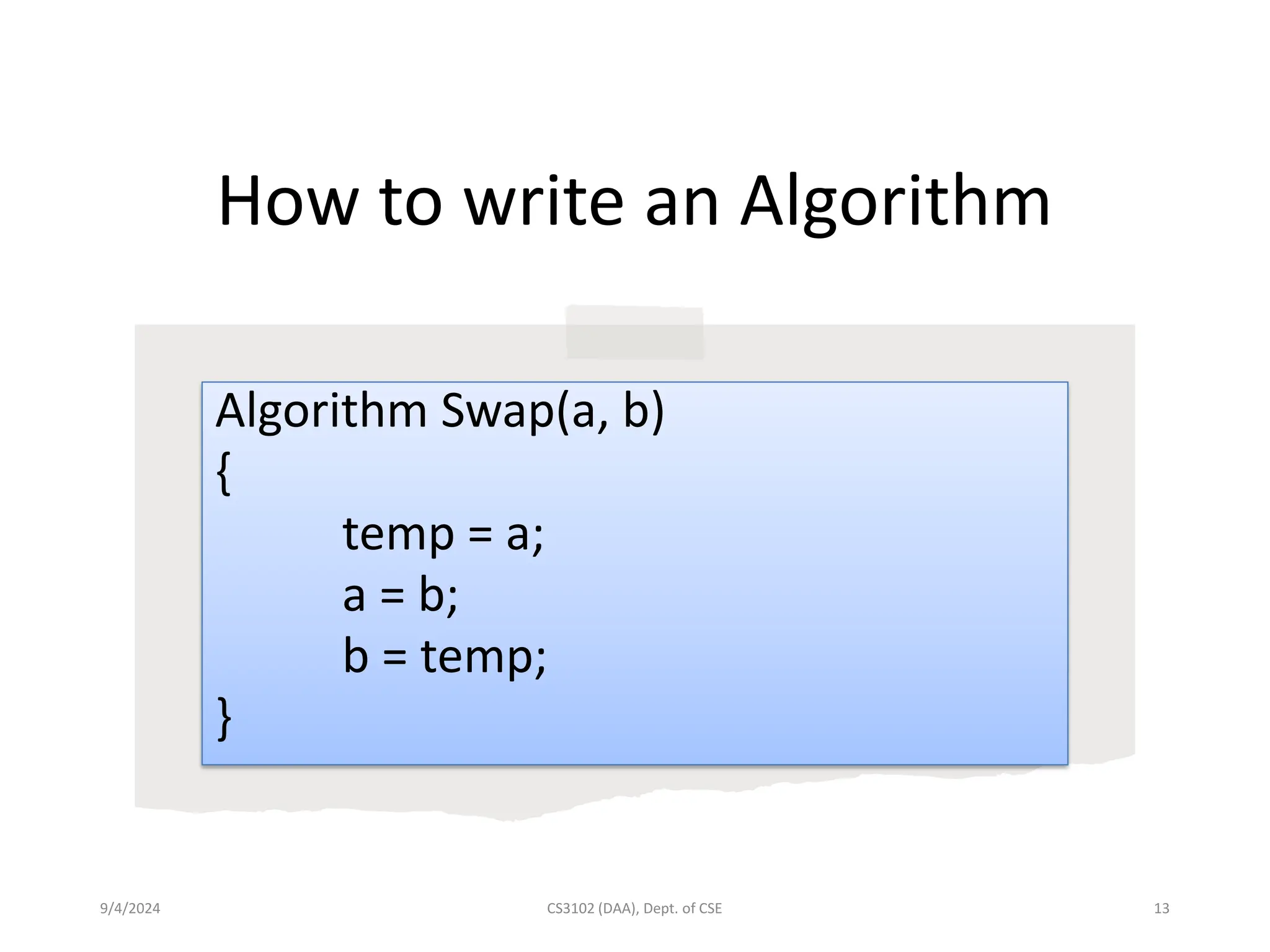
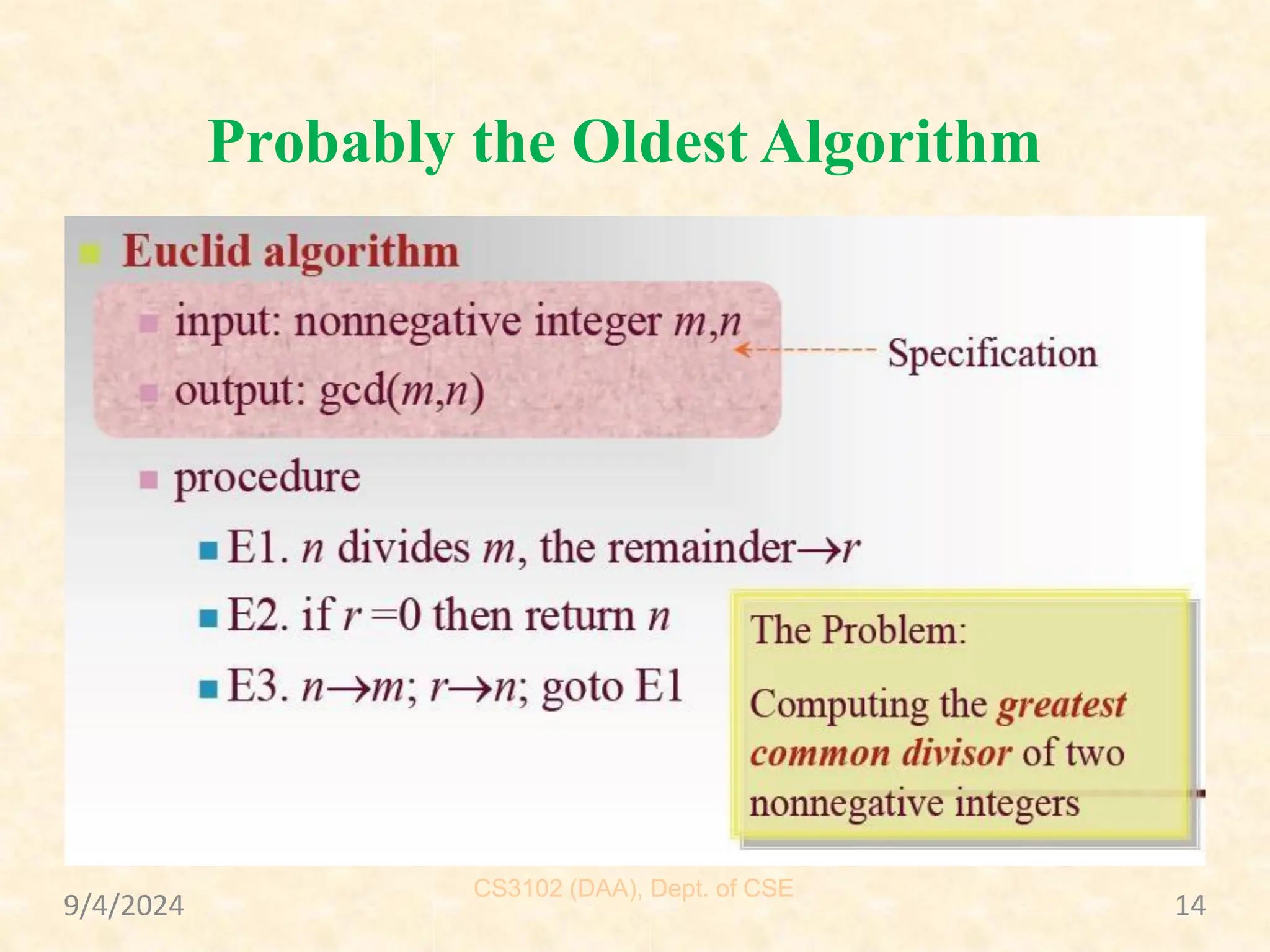
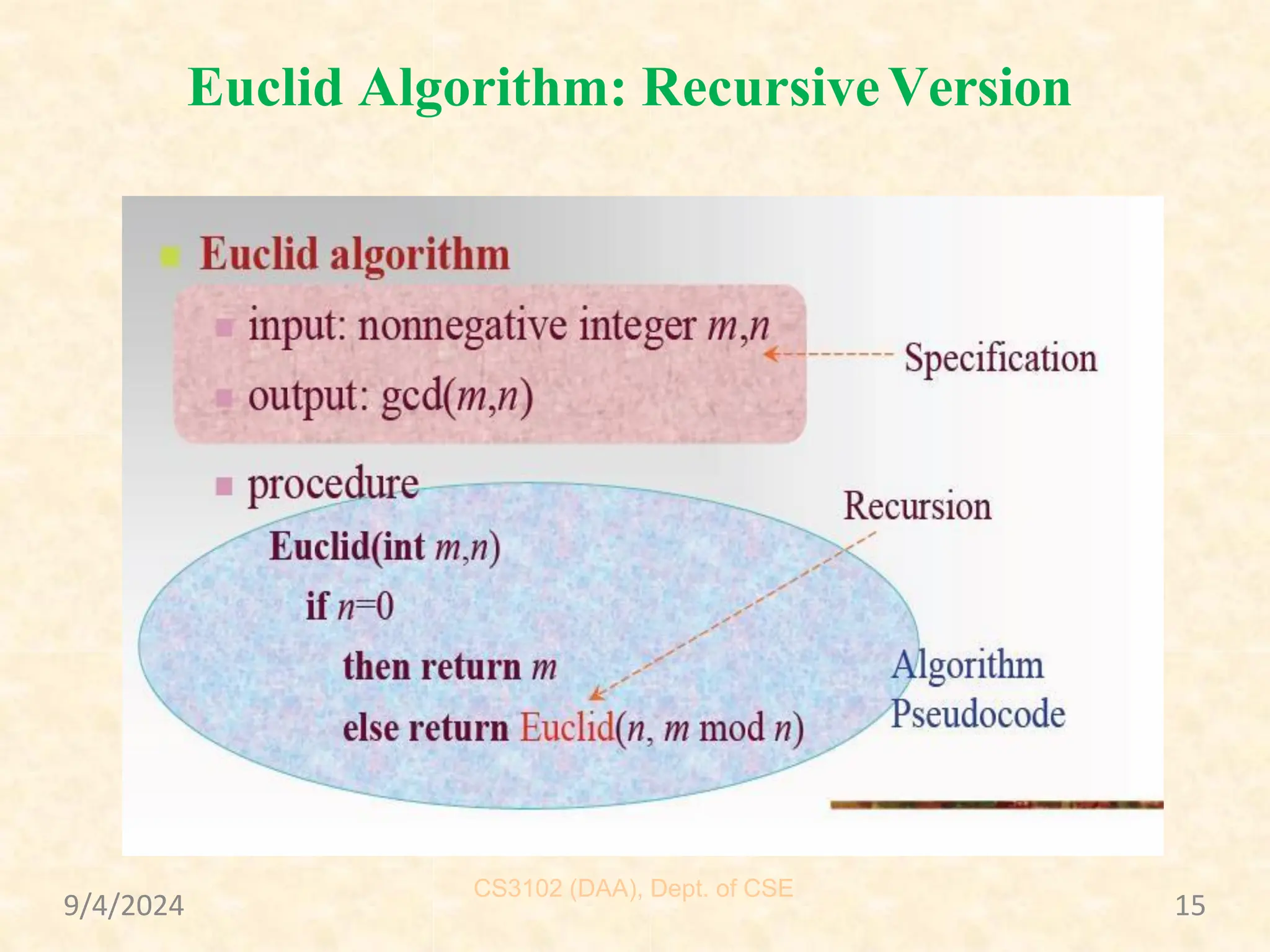
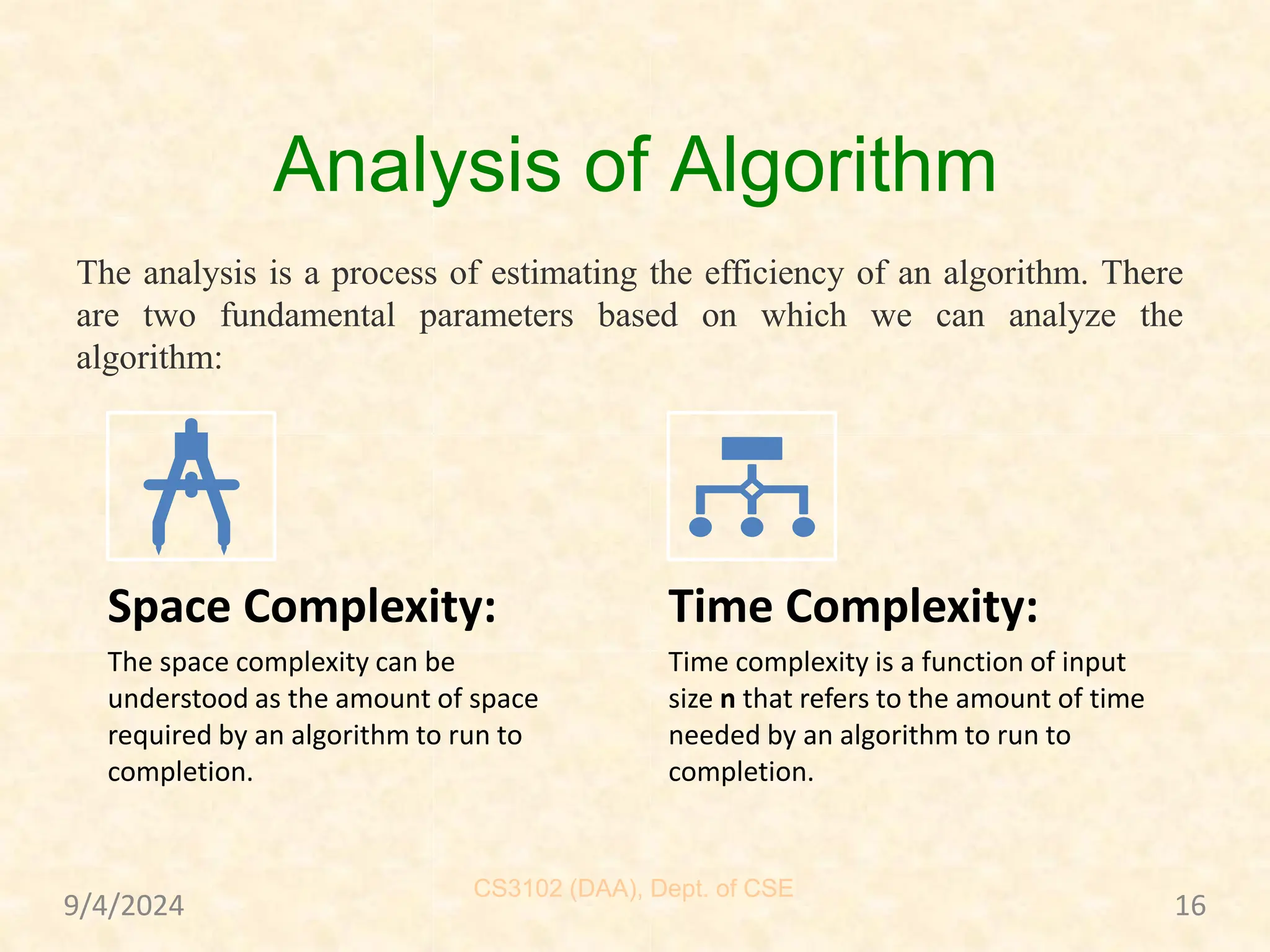
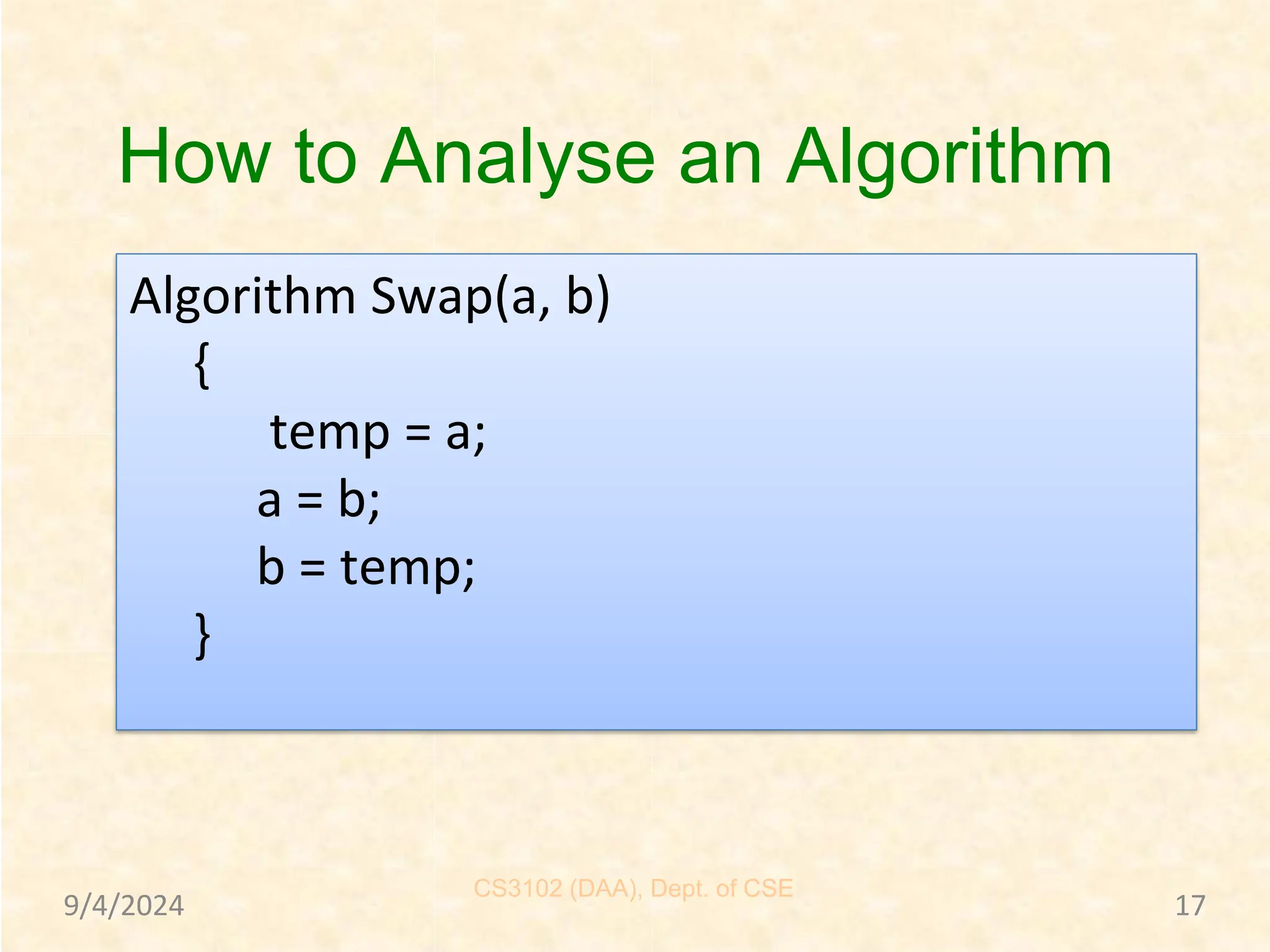
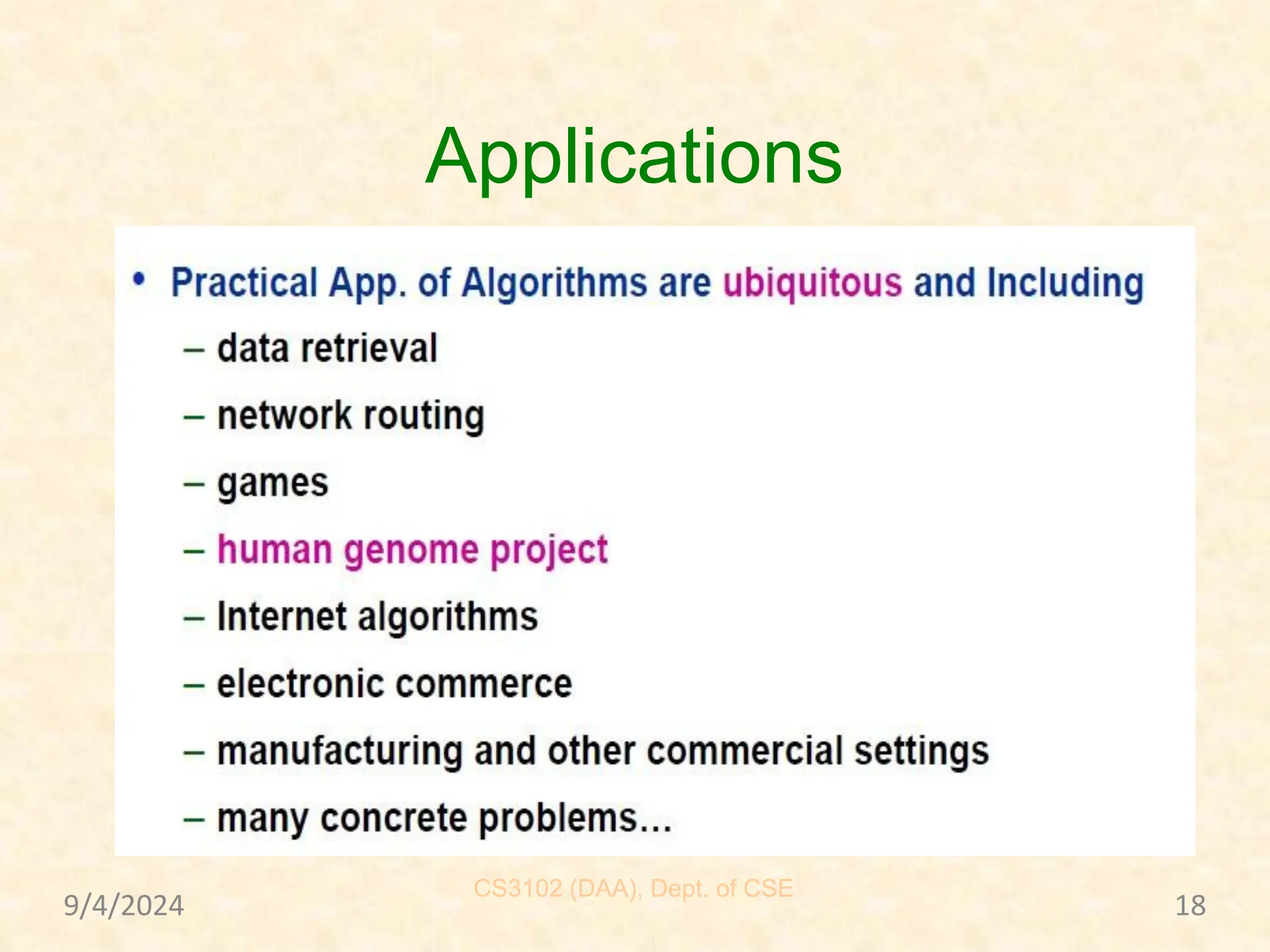
![Frequency Count Method Algorithm Sum(A, n) { s = 0; for(i=0; i<n; i++) { s = s + A[i]; } return s; }](https://image.slidesharecdn.com/1-241204161721-c318da80/75/1-Introduction-to-Algorithms-Specification-of-Algorithm-Complexity-pdf-19-2048.jpg)
![Frequency Count Method (Example) Algorithm Add(A, B, n) { for(i=0; i<n; i++) { for(j=0; j<n; j++) { C[i,j] = A[i,j] + B[i,j] } } }](https://image.slidesharecdn.com/1-241204161721-c318da80/75/1-Introduction-to-Algorithms-Specification-of-Algorithm-Complexity-pdf-20-2048.jpg)
![Frequency Count Method (Example) Algorithm Multiply(A, B, n) { for(i=0; i<n; i++) { for(j=0; j<n; j++) { C[i,j] = 0; for(k=0; k<n; k++) { C[i,j] = C[i,j] + A[i,k] * B[i,j]; } } } }](https://image.slidesharecdn.com/1-241204161721-c318da80/75/1-Introduction-to-Algorithms-Specification-of-Algorithm-Complexity-pdf-21-2048.jpg)
